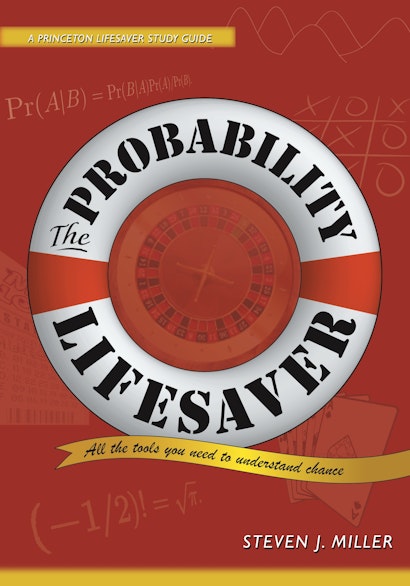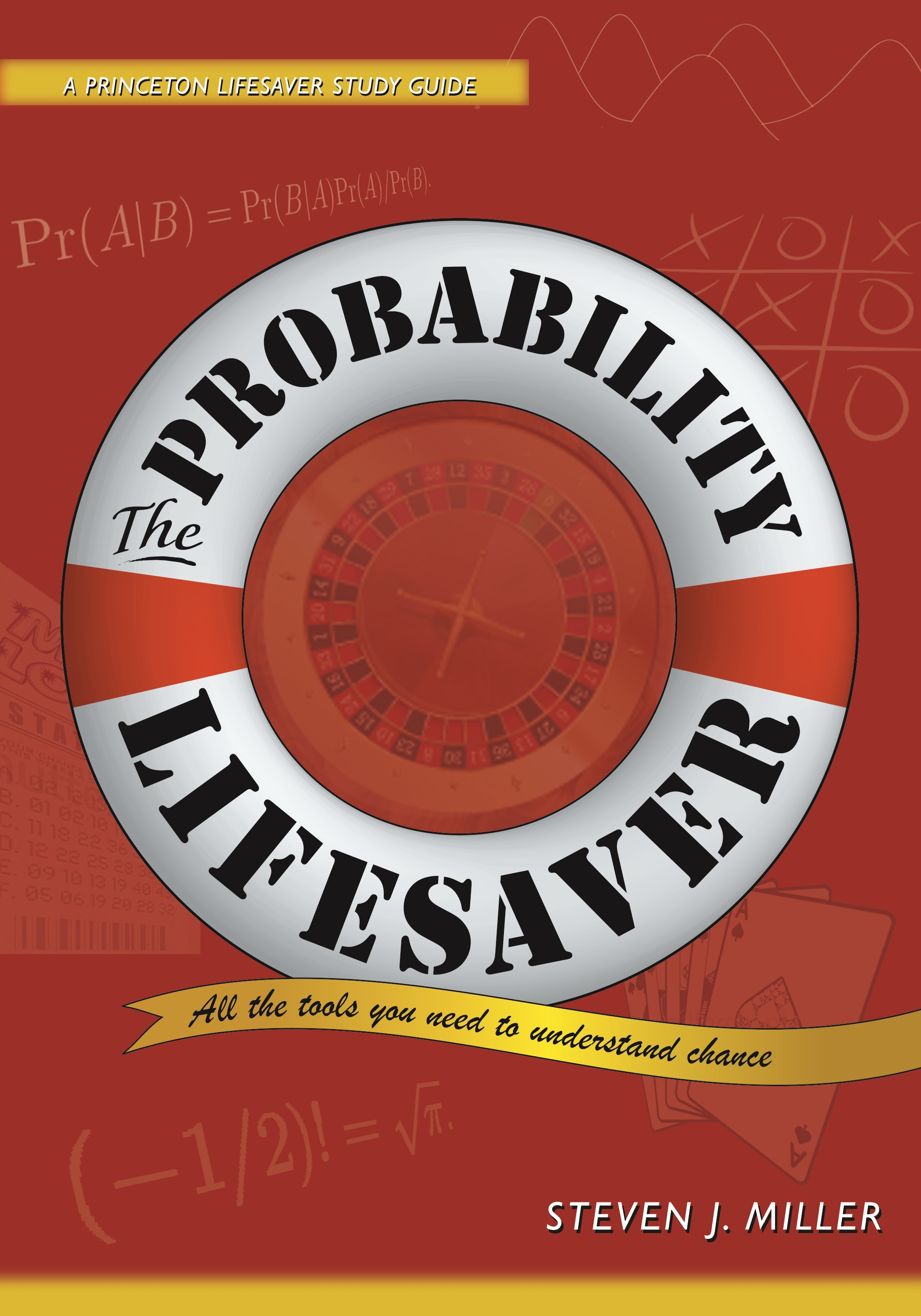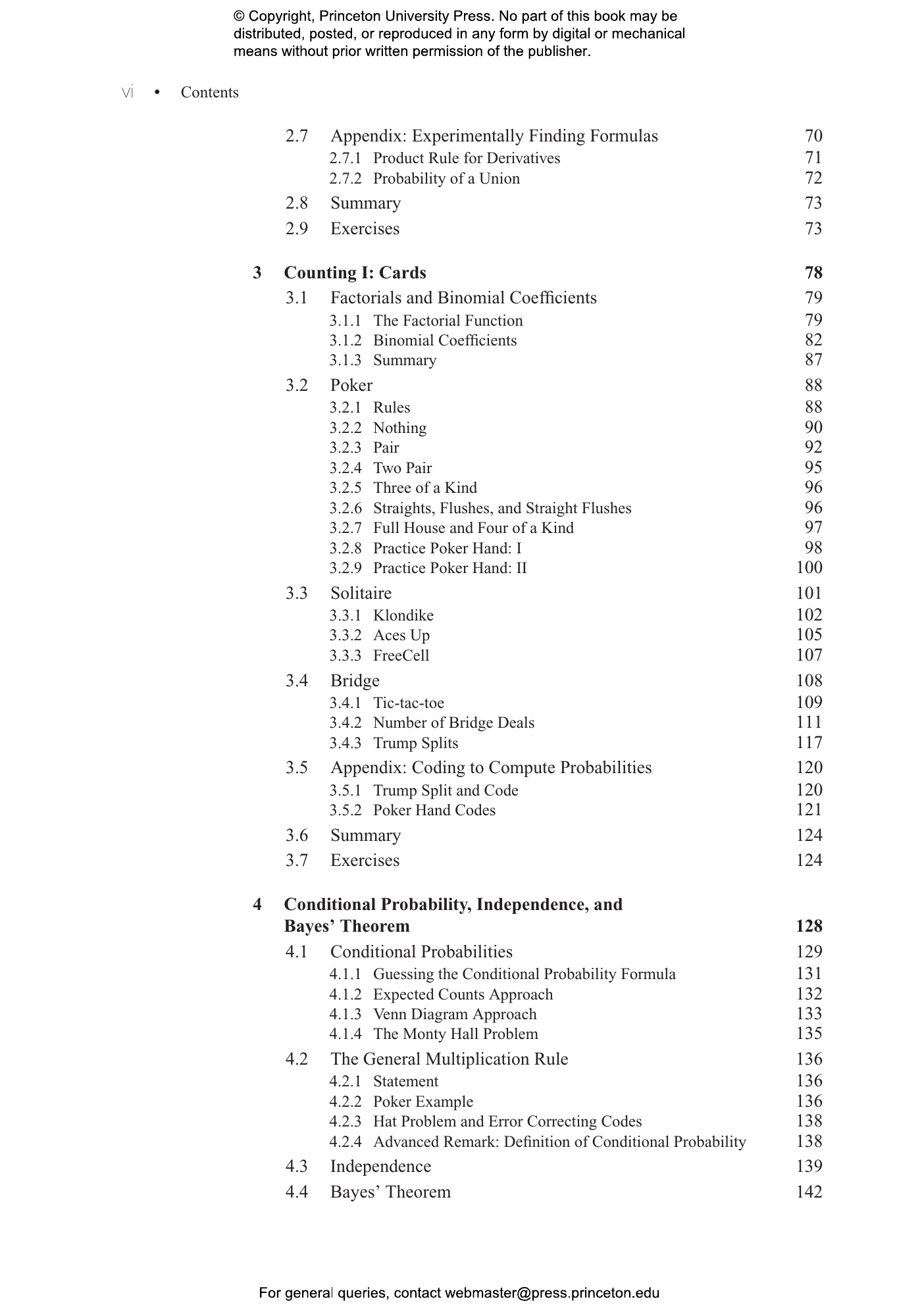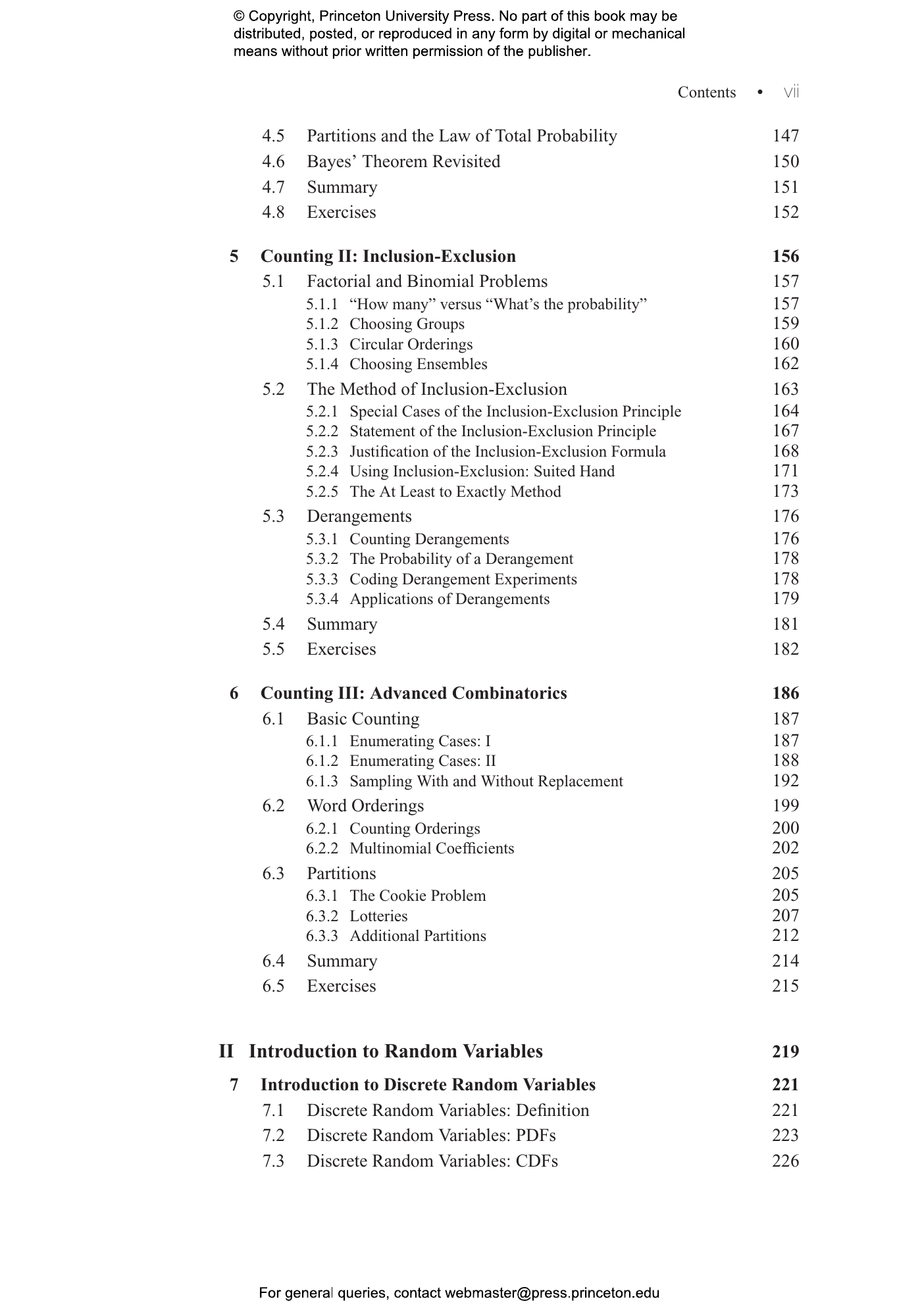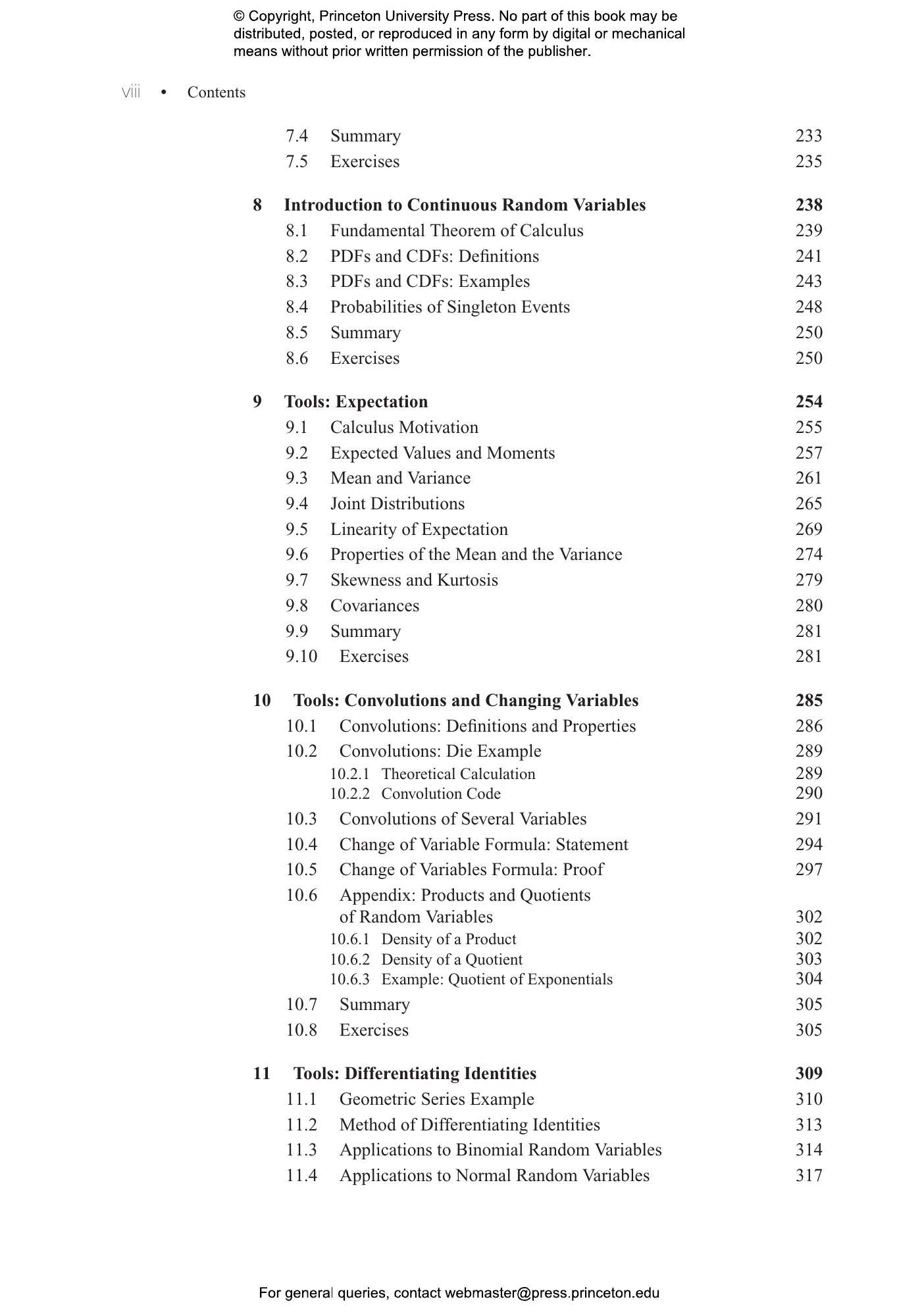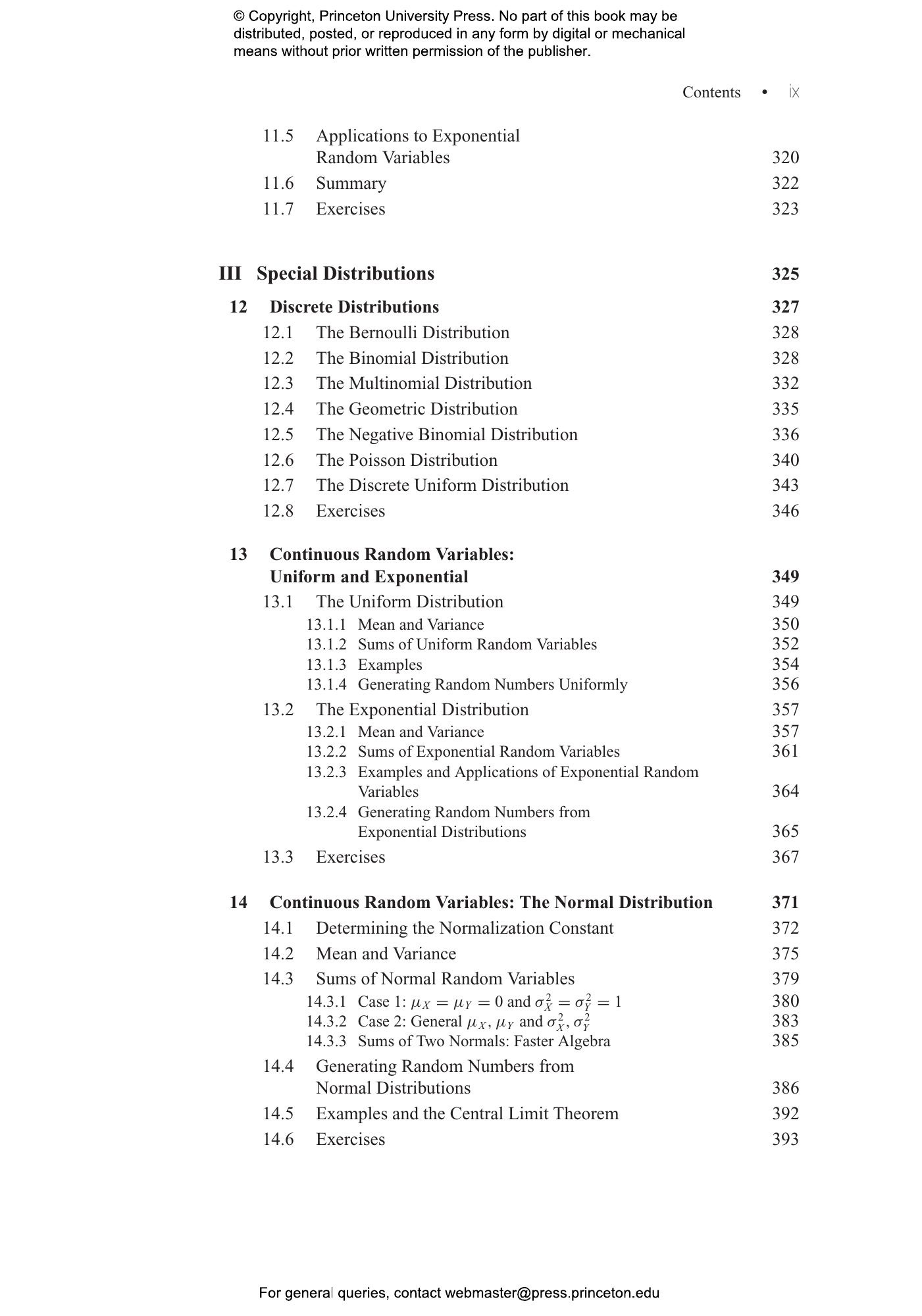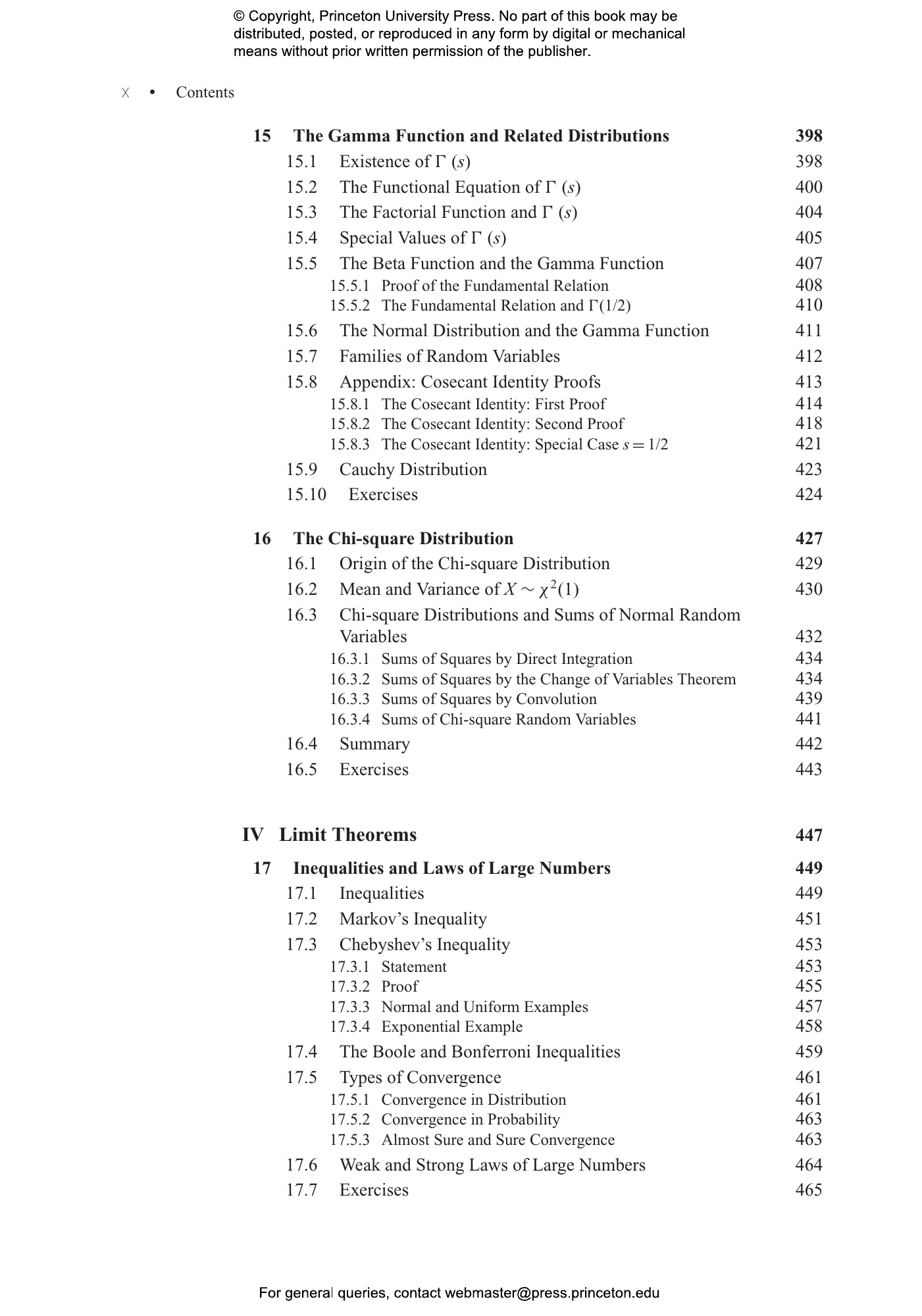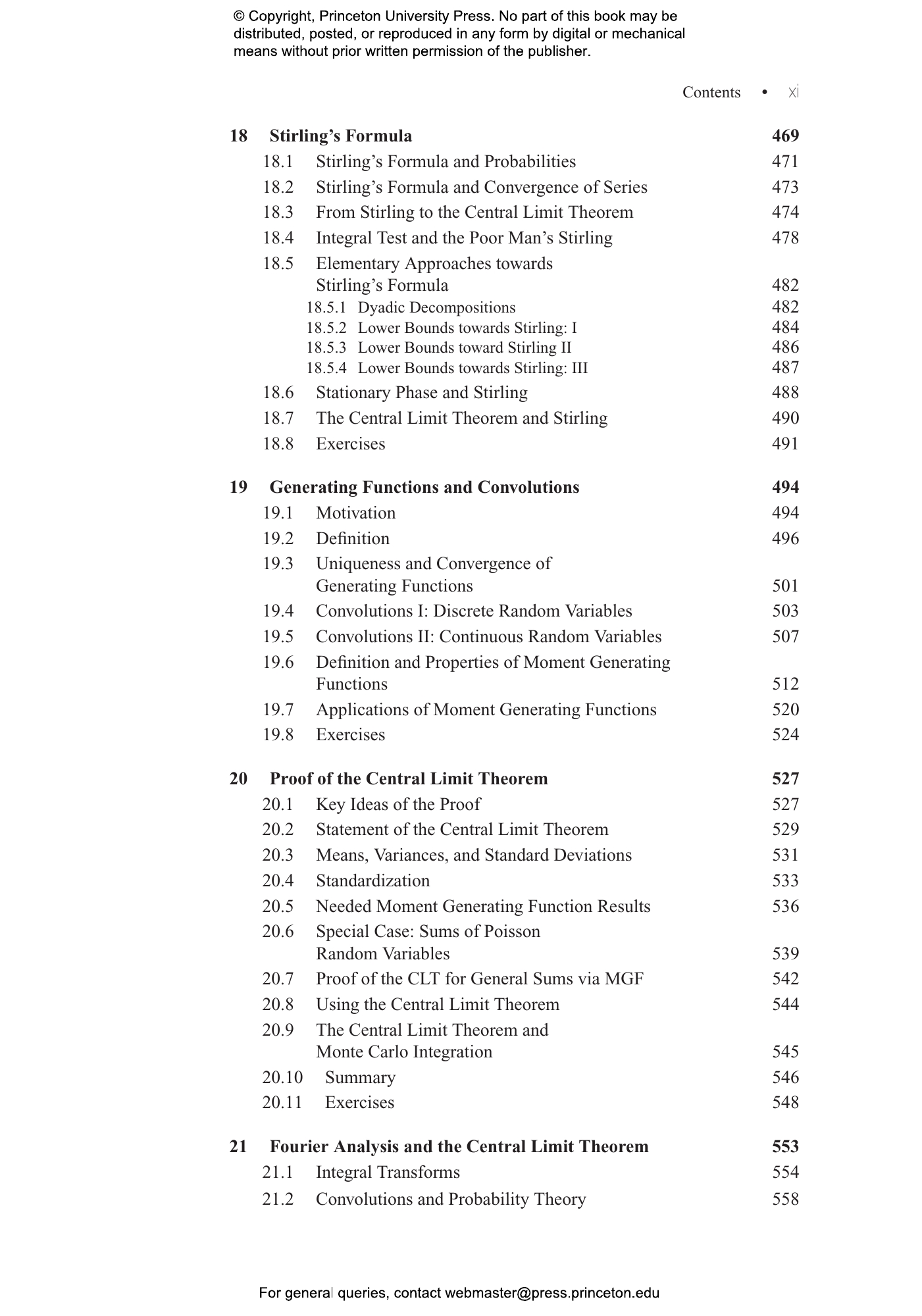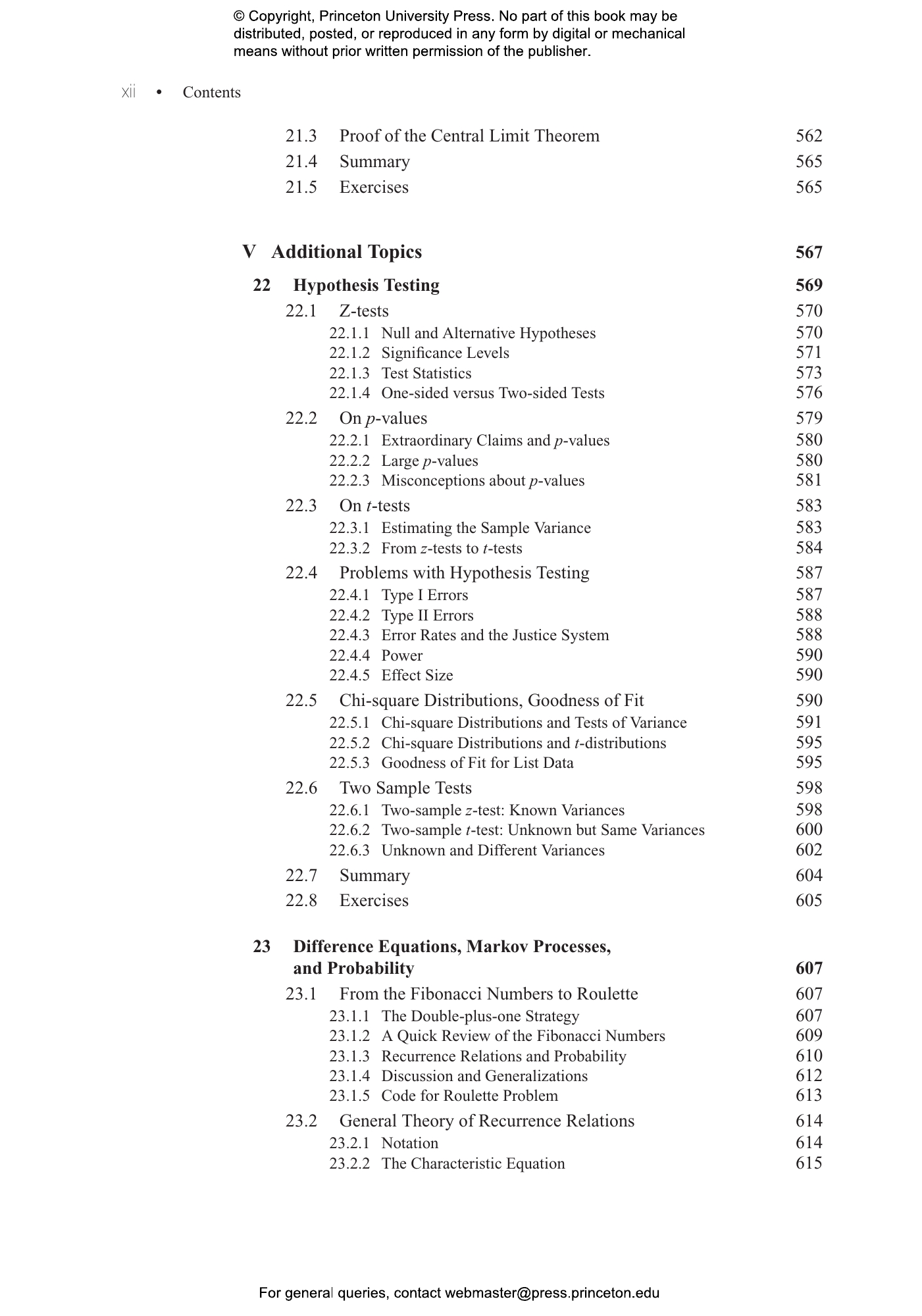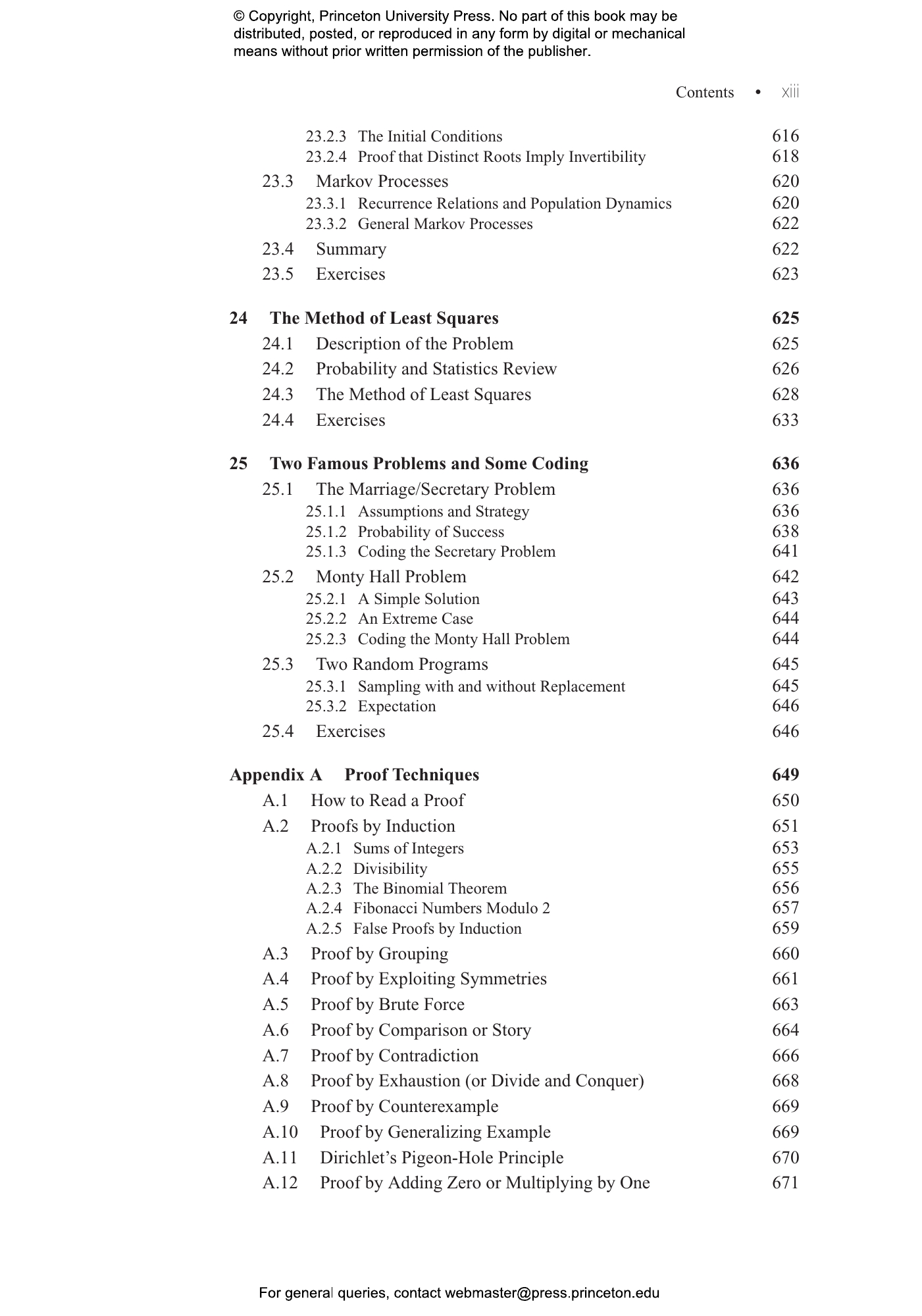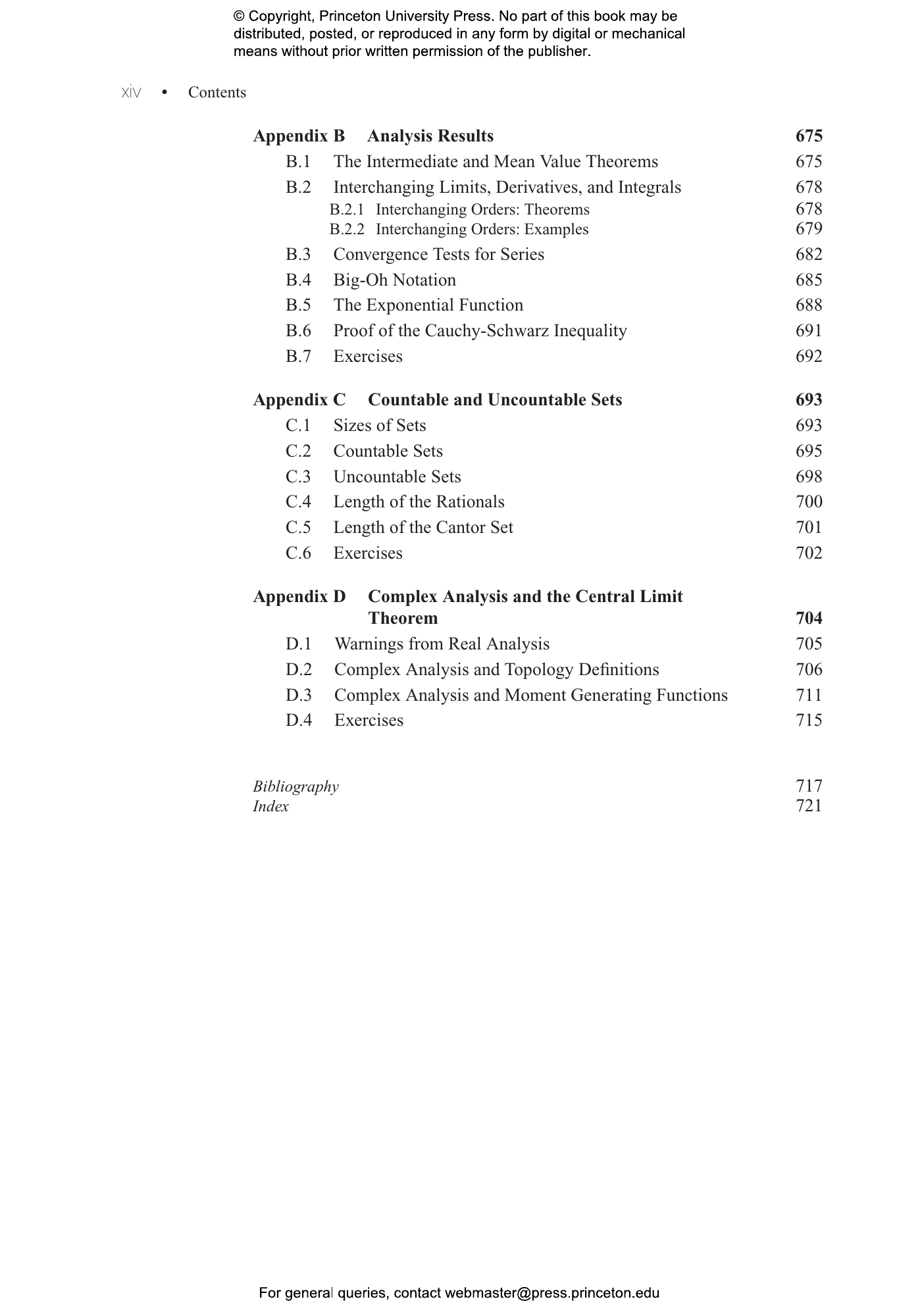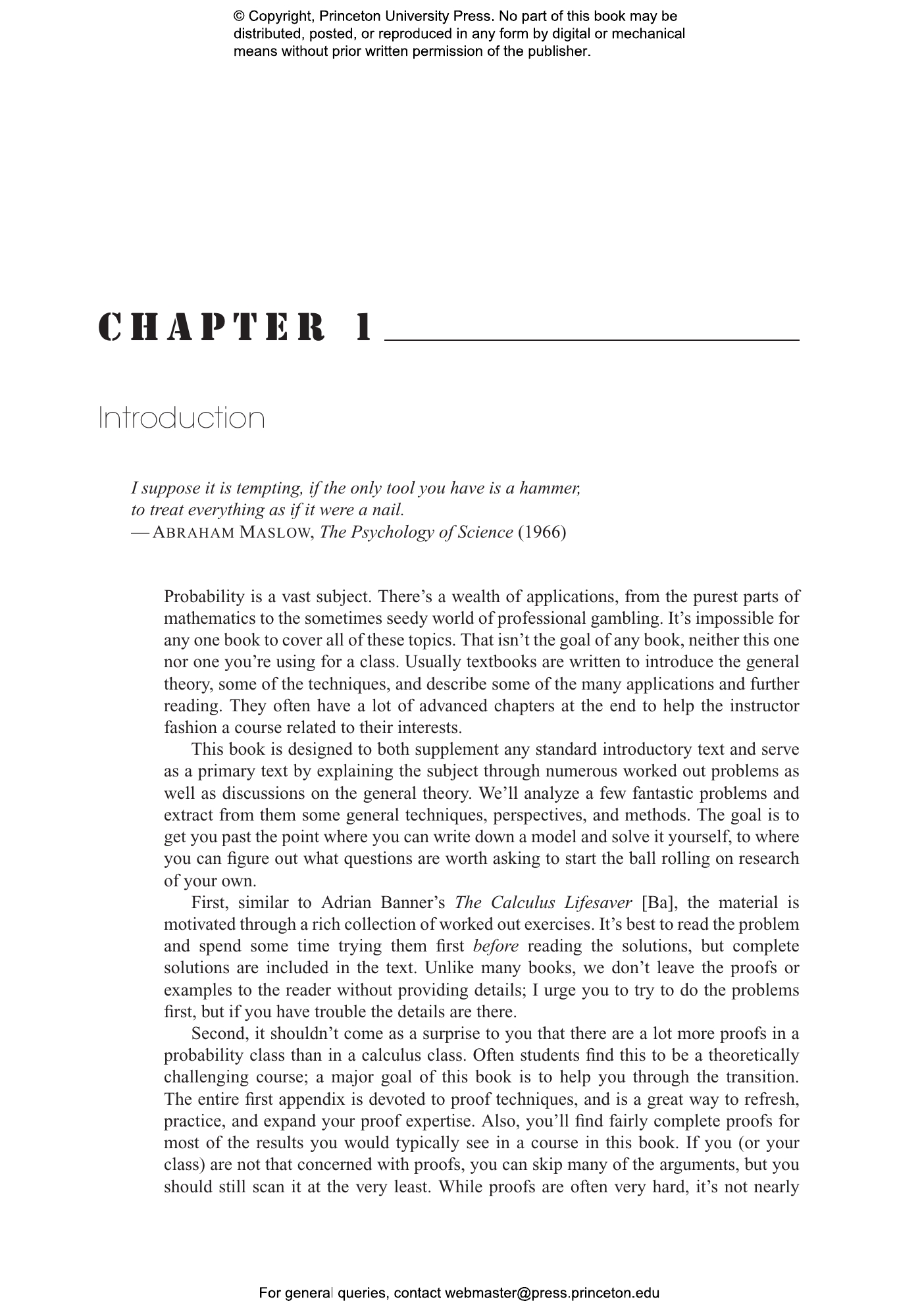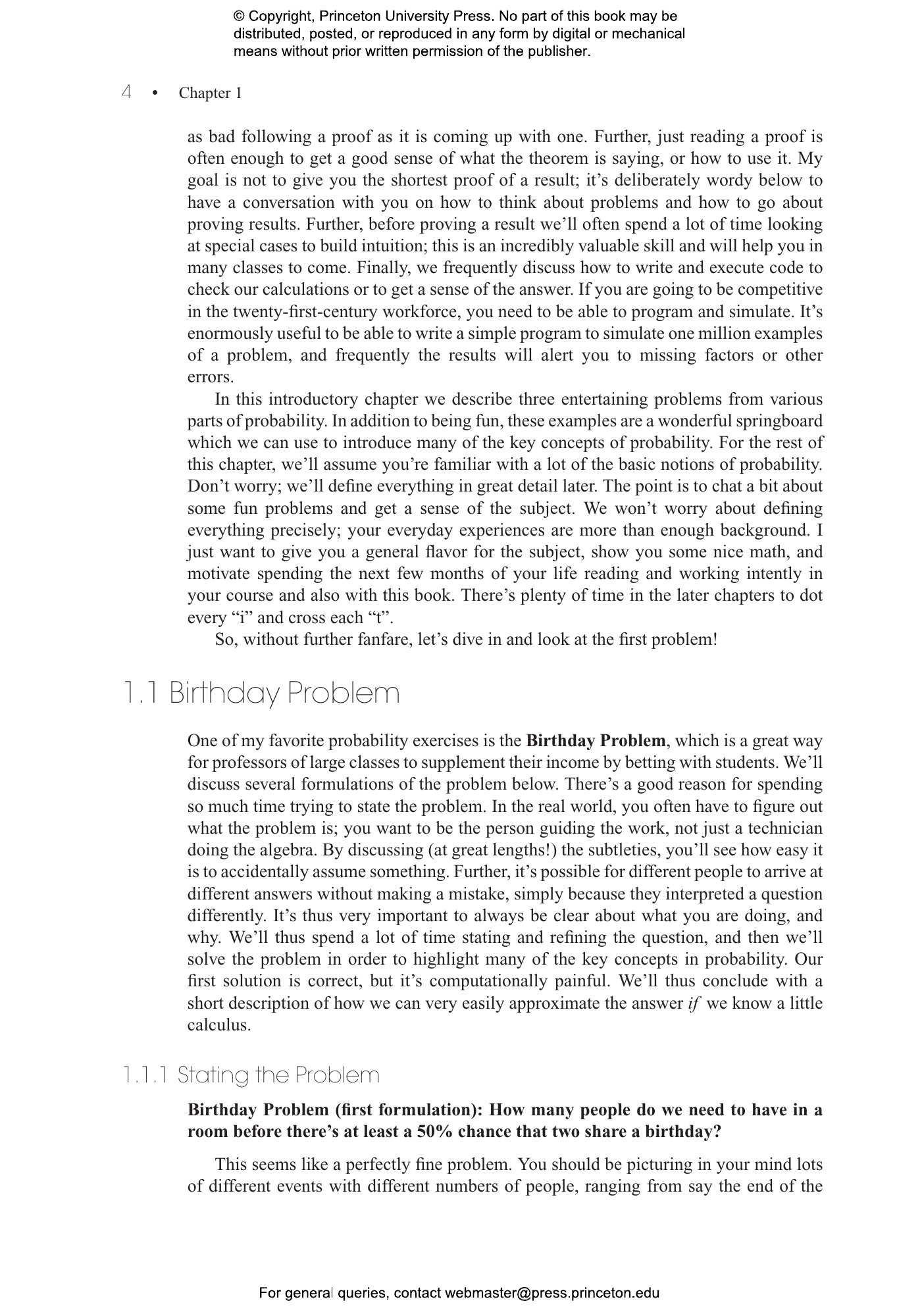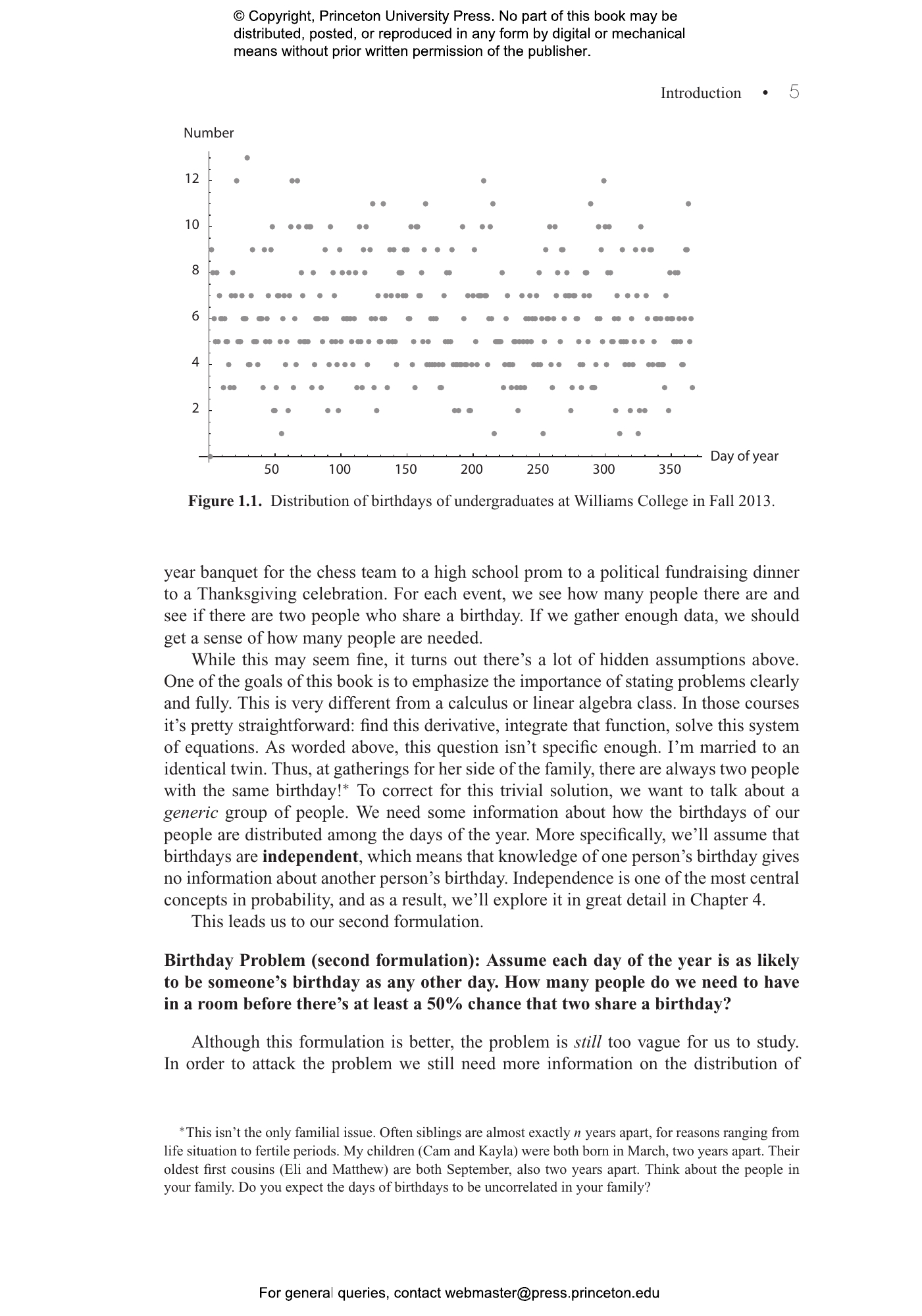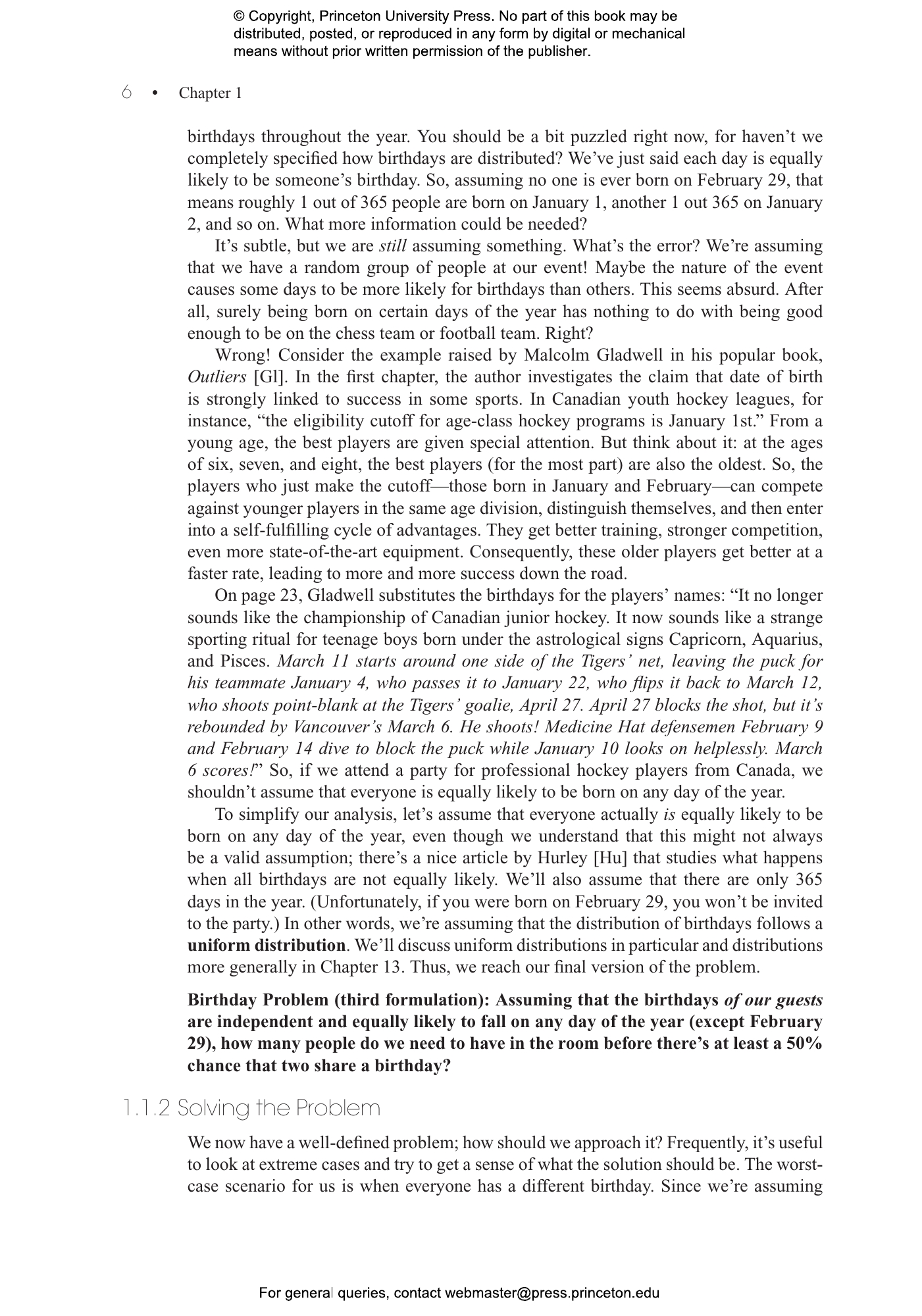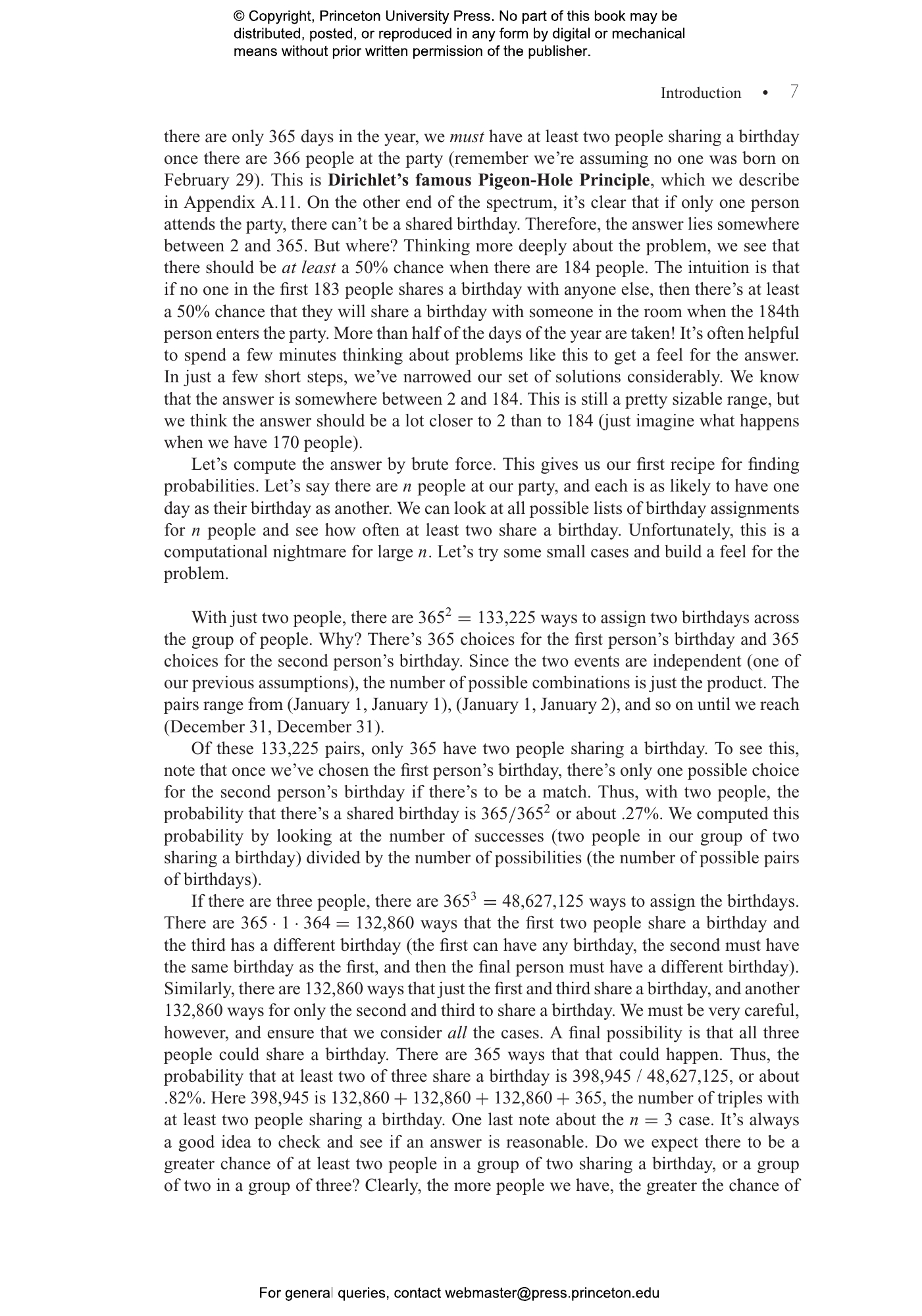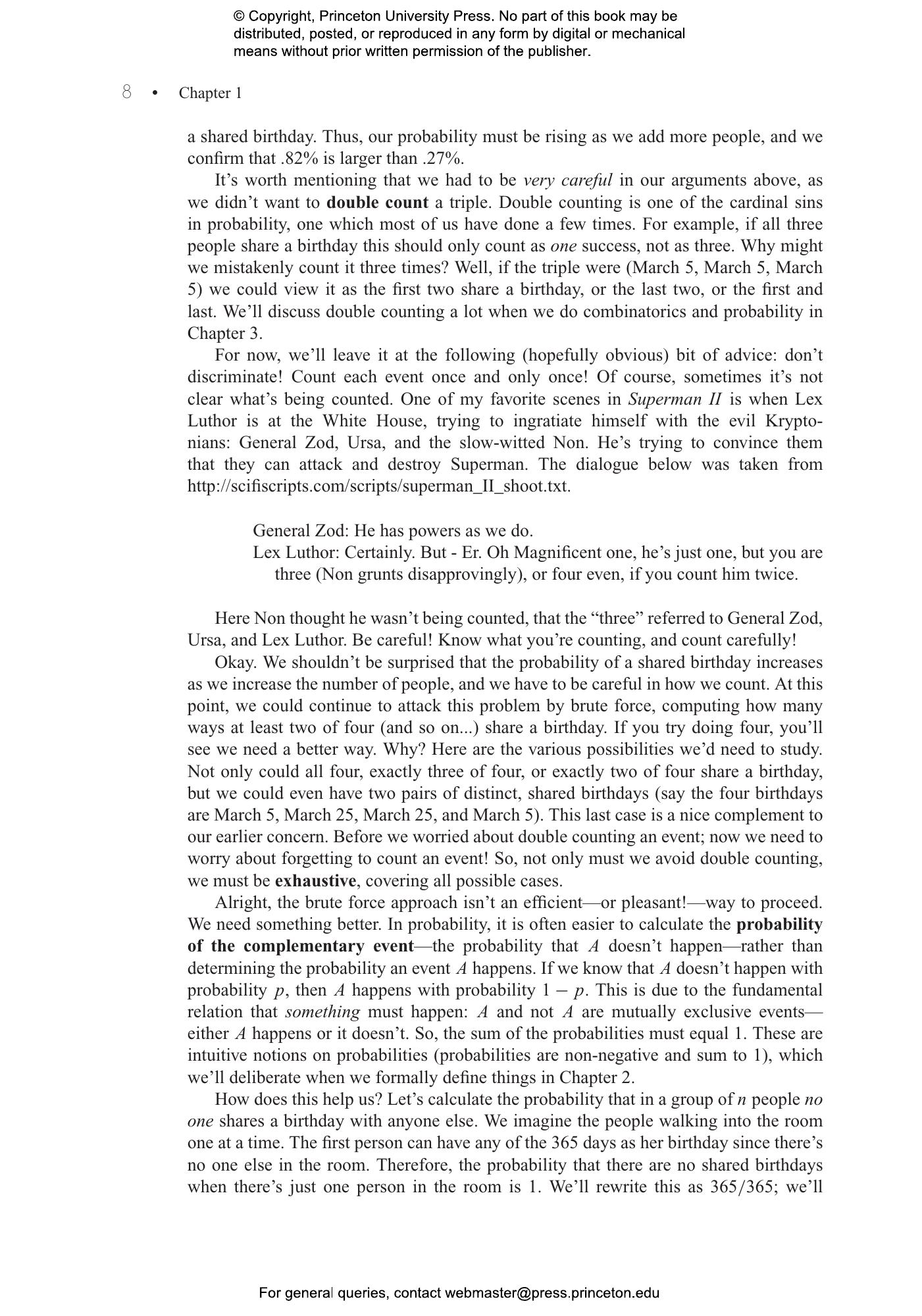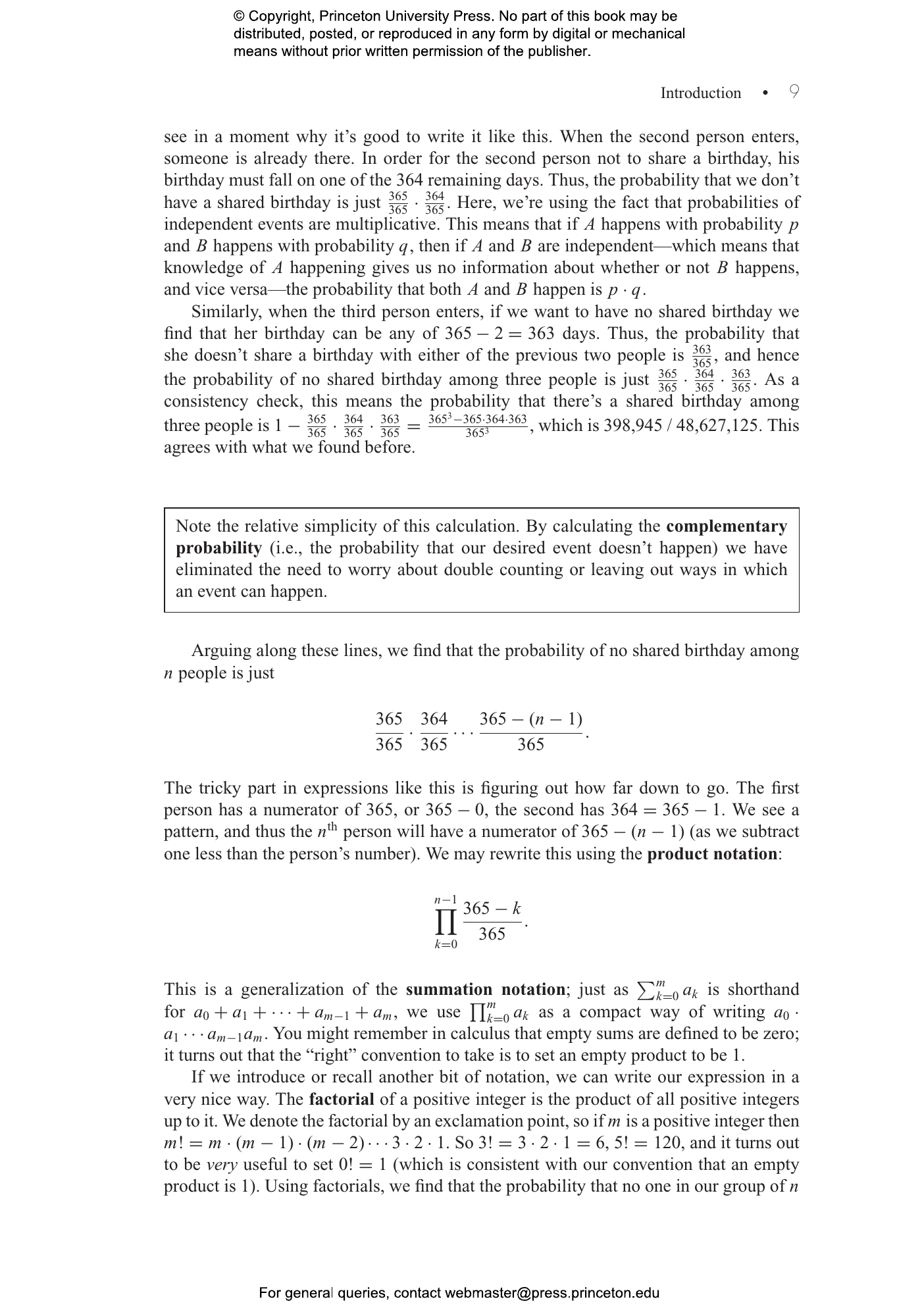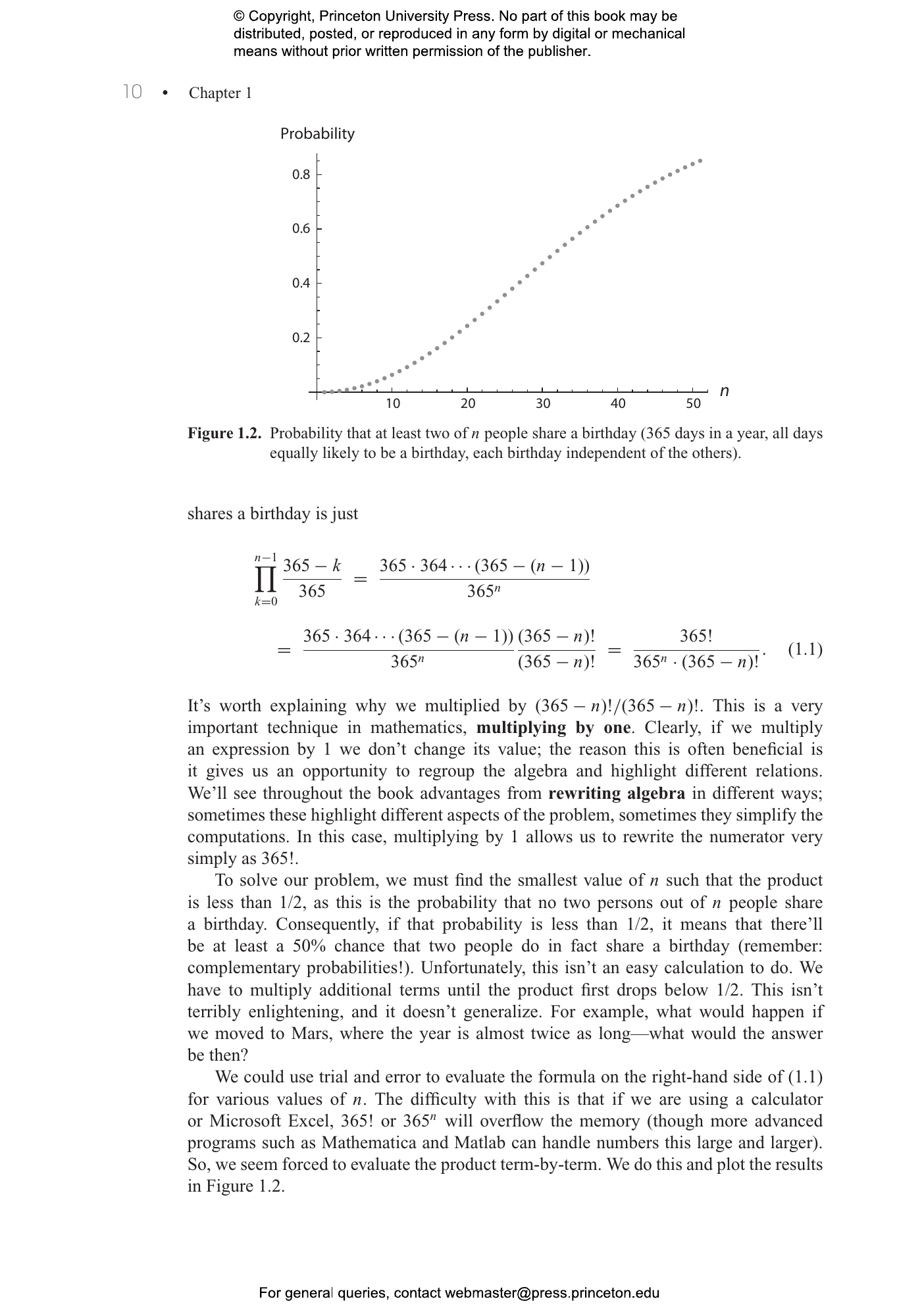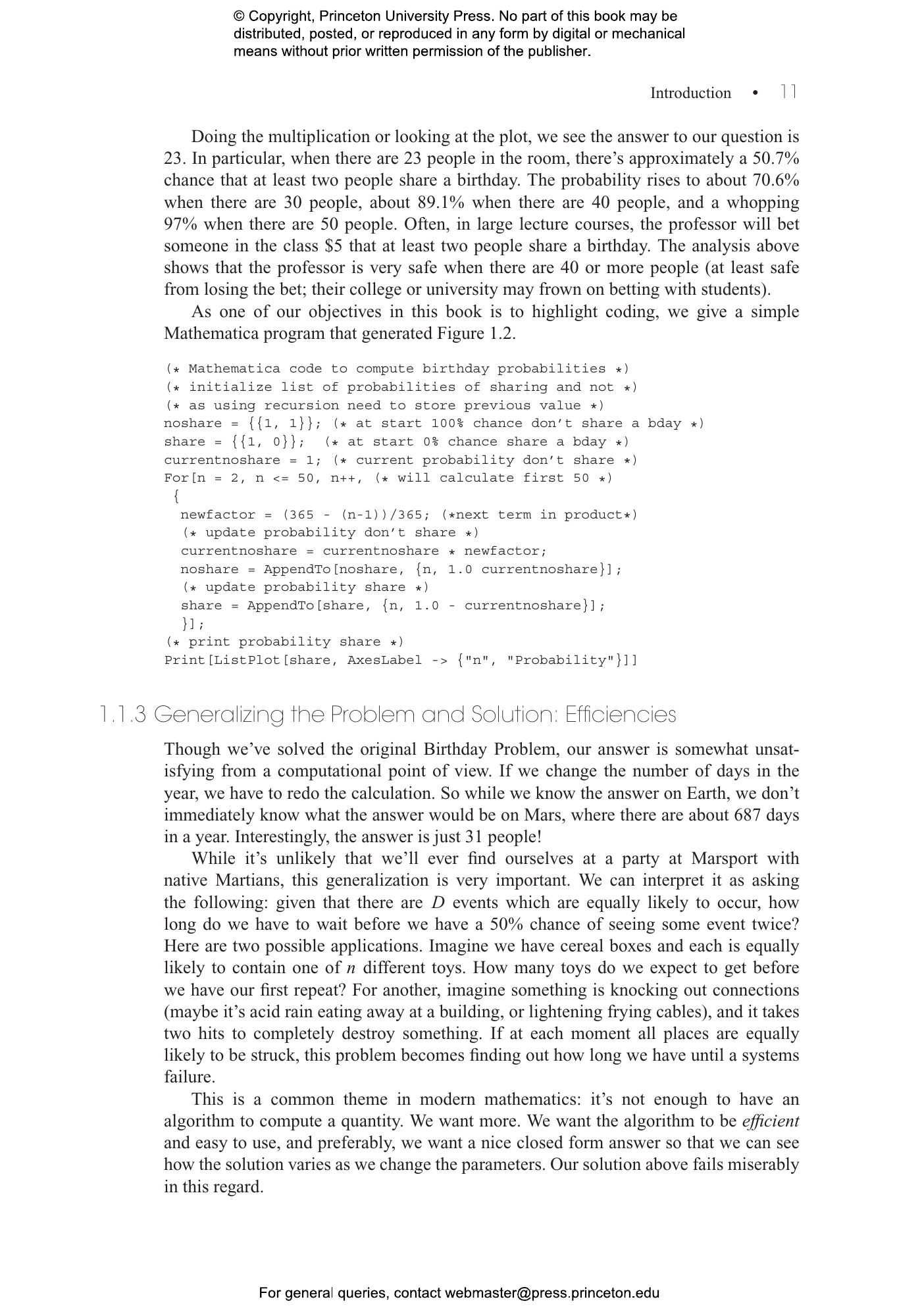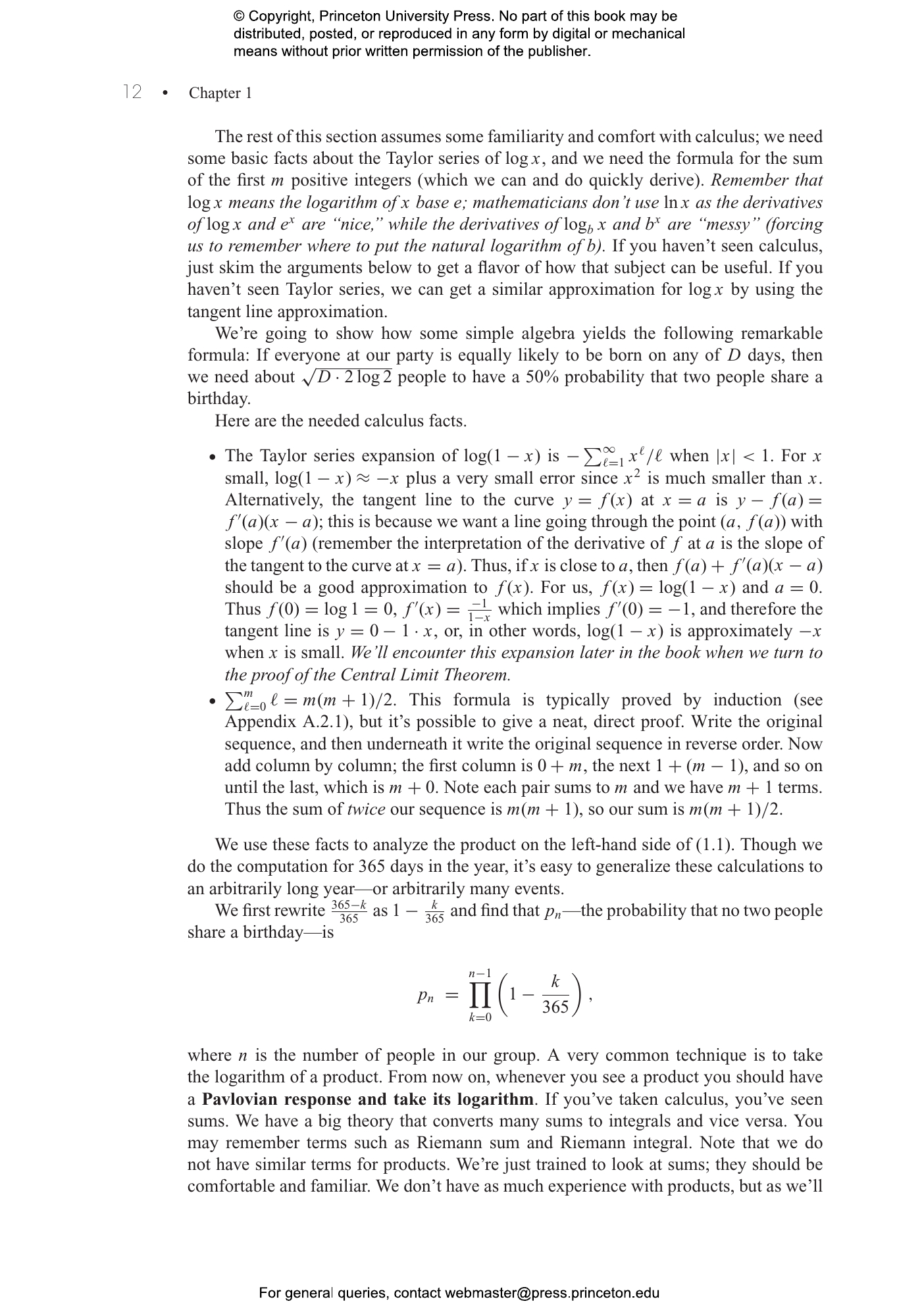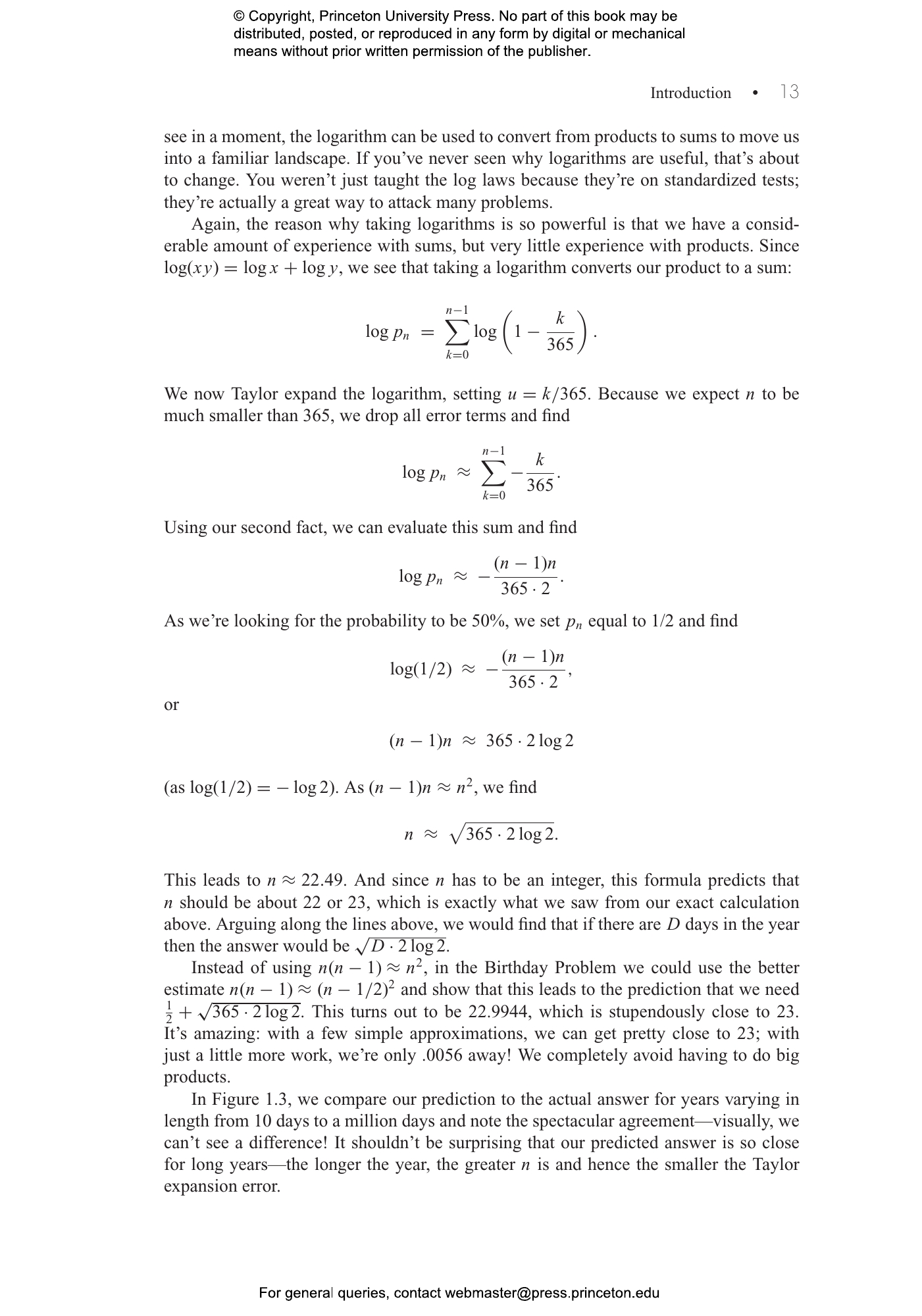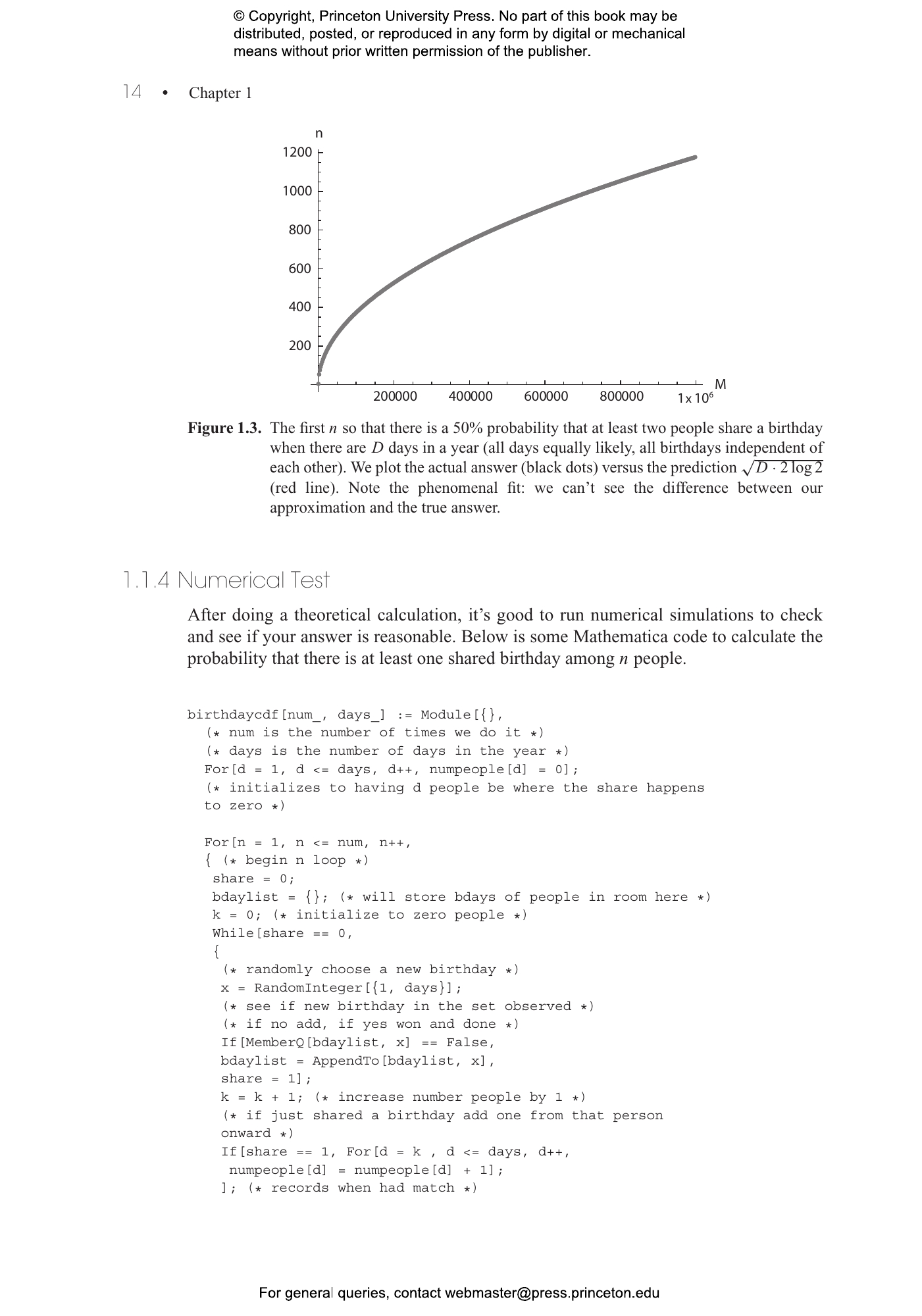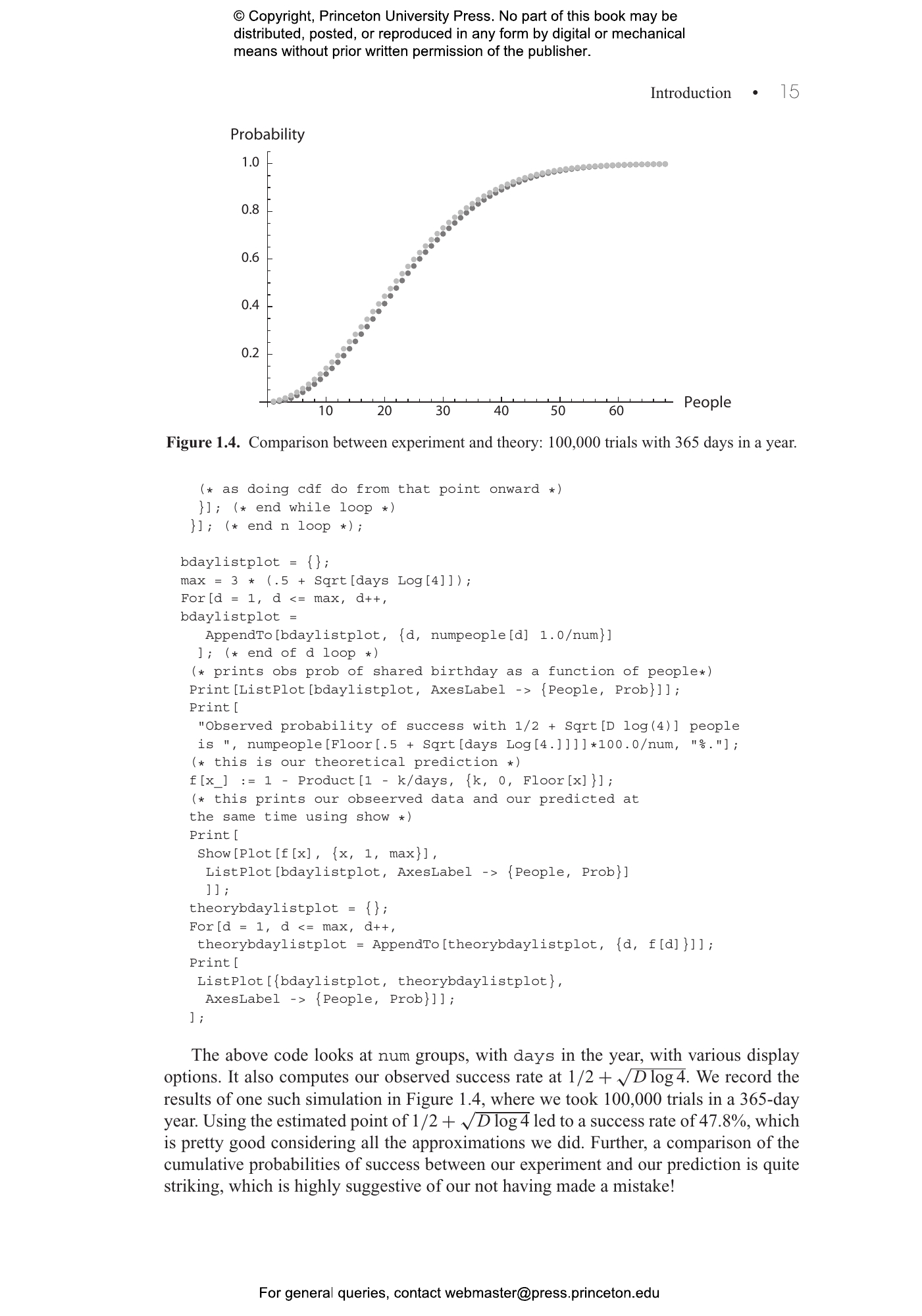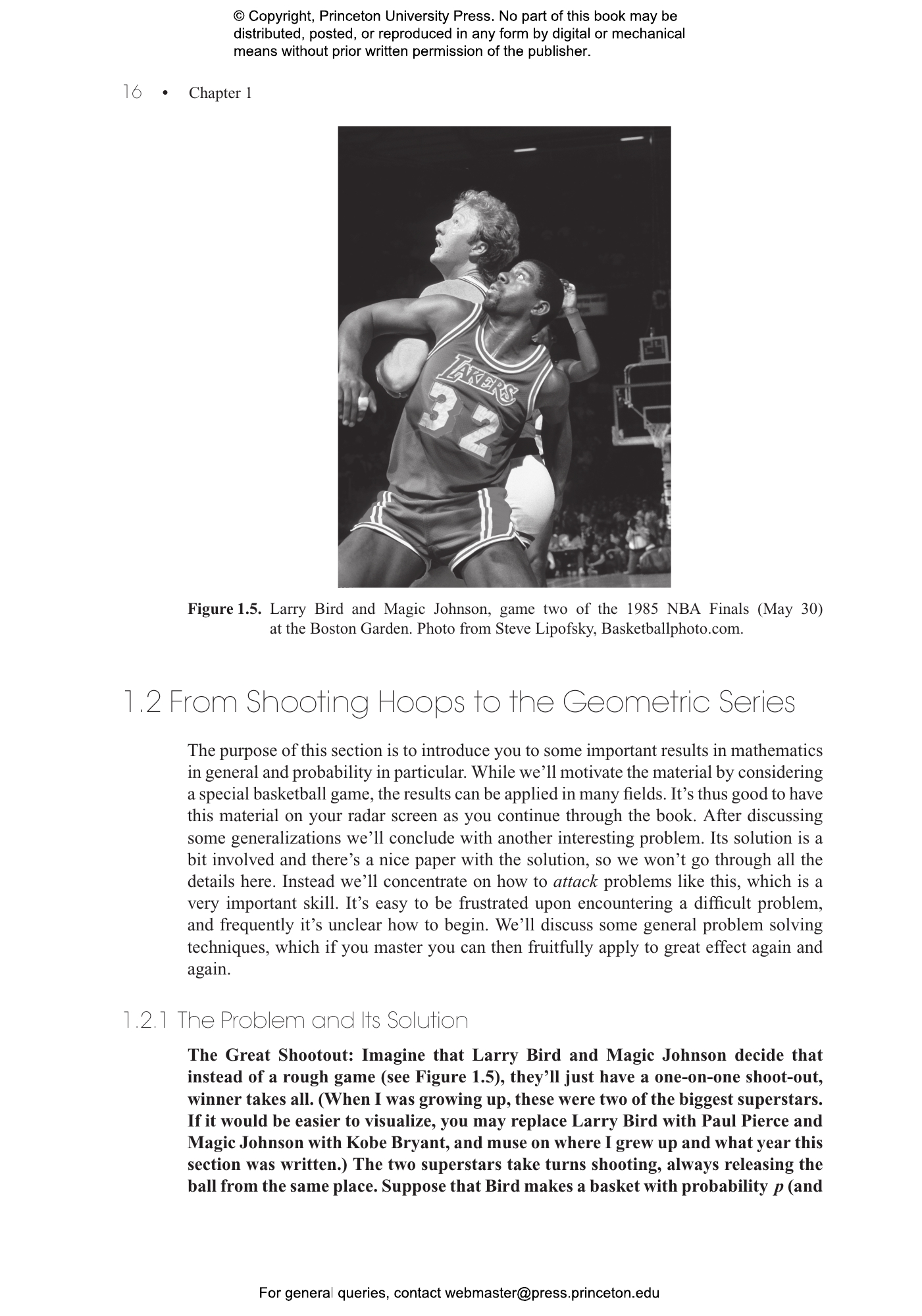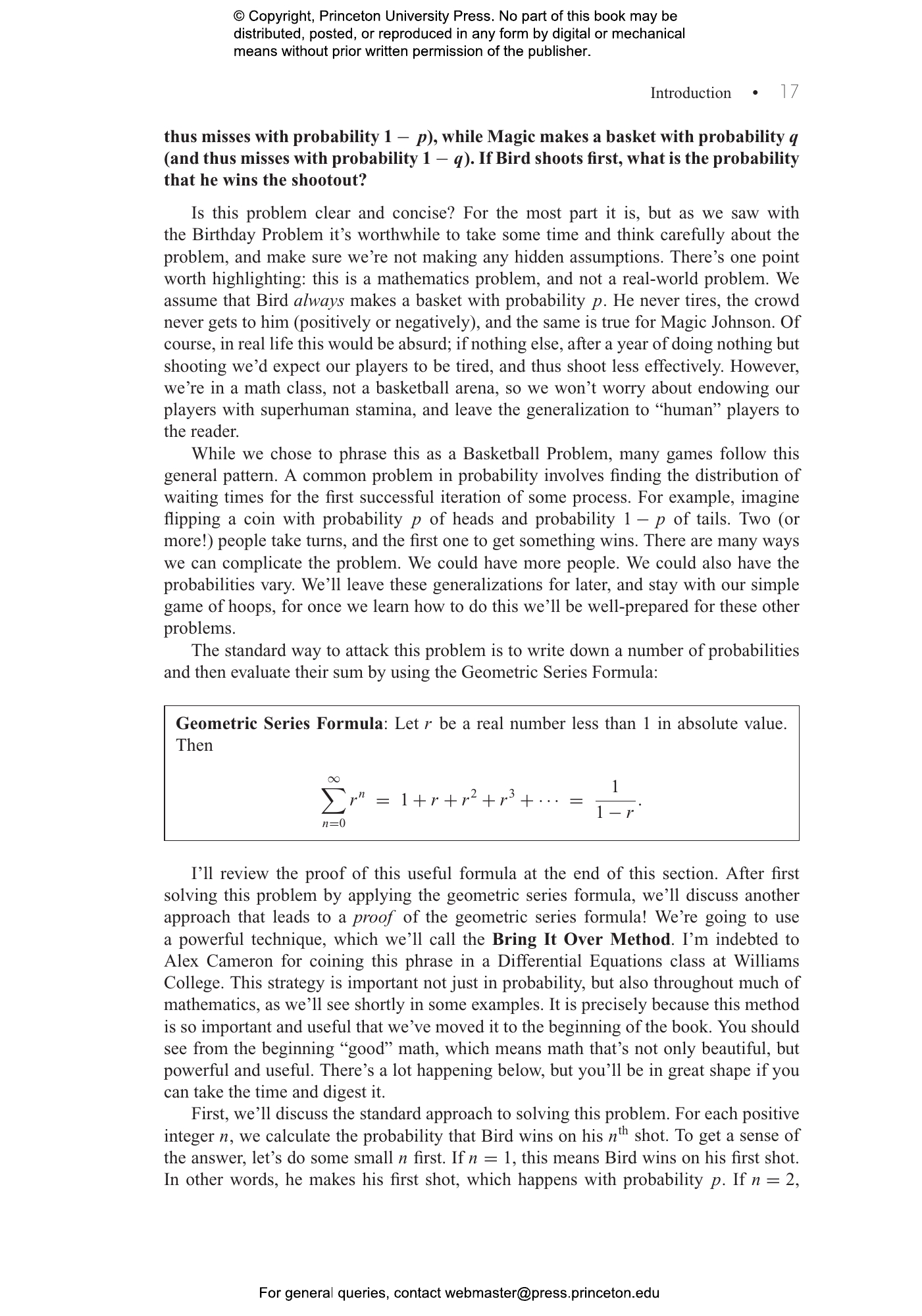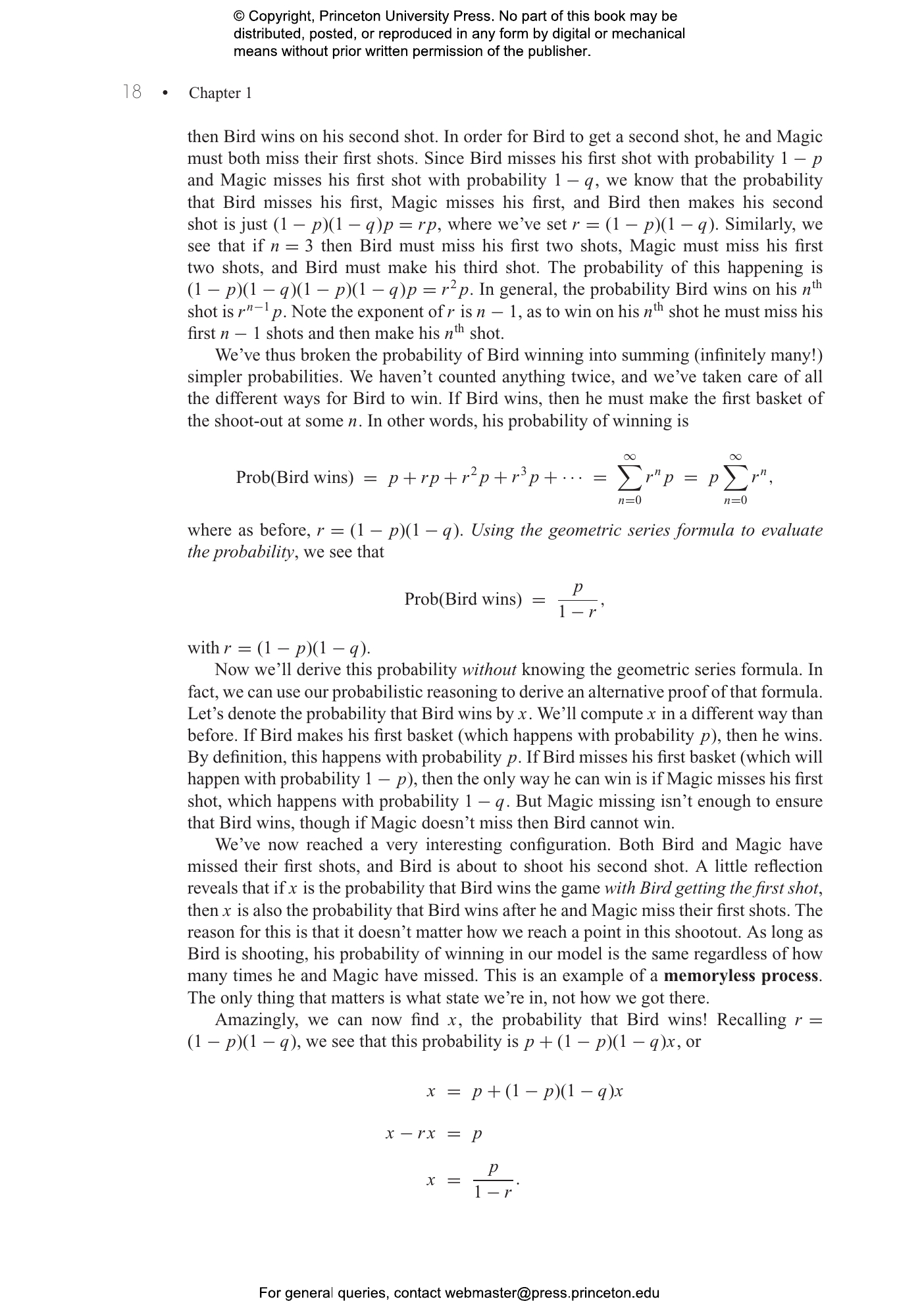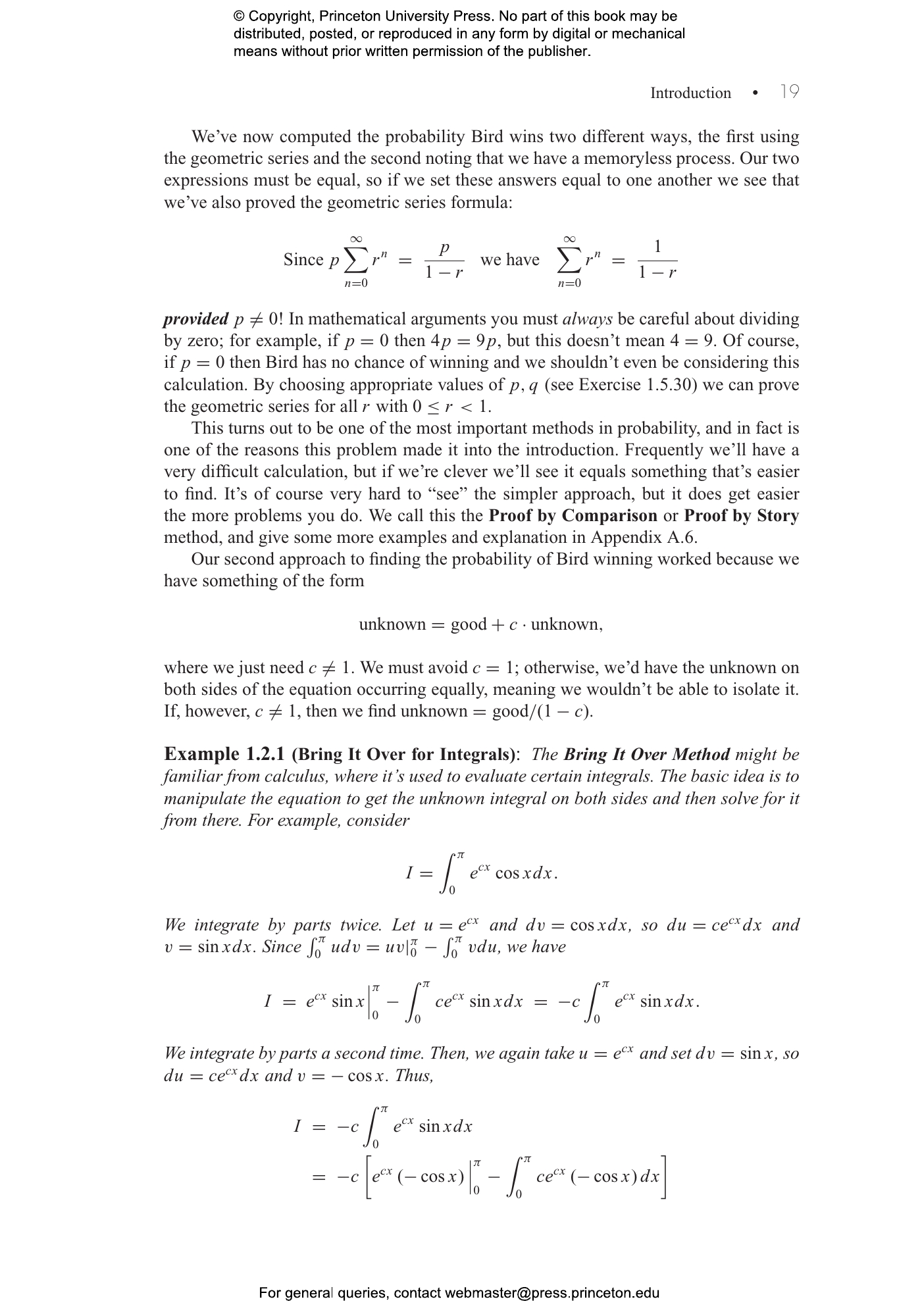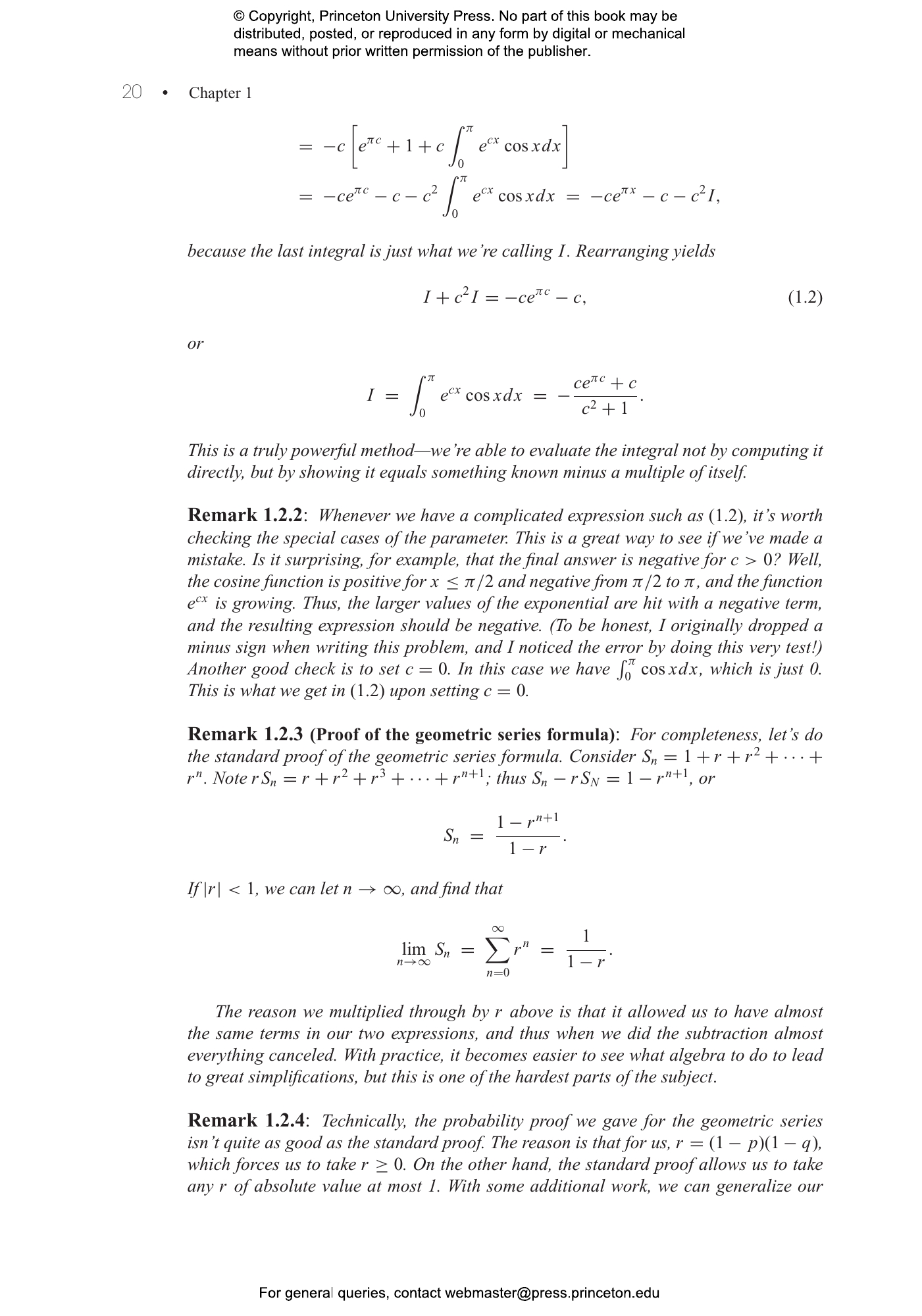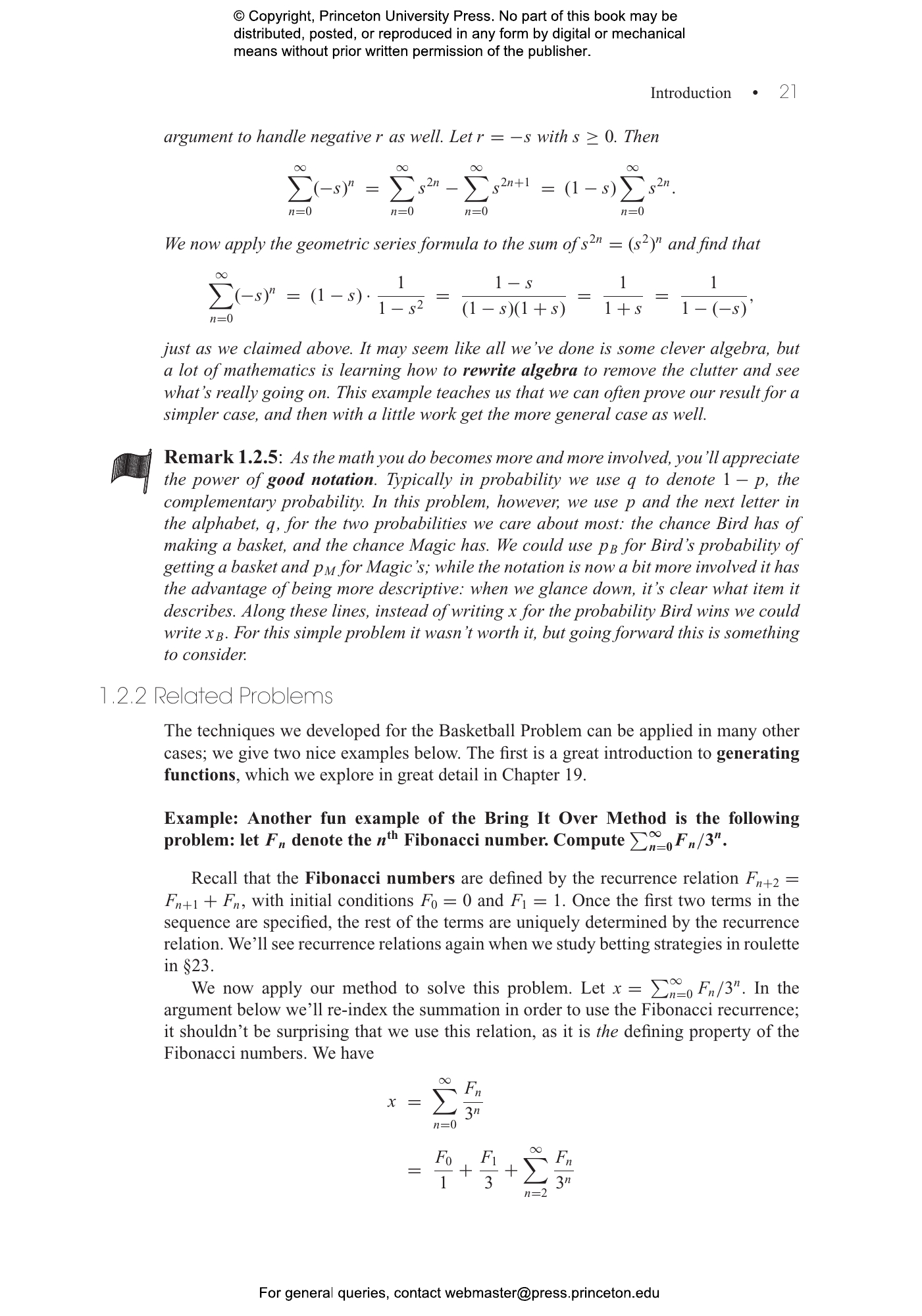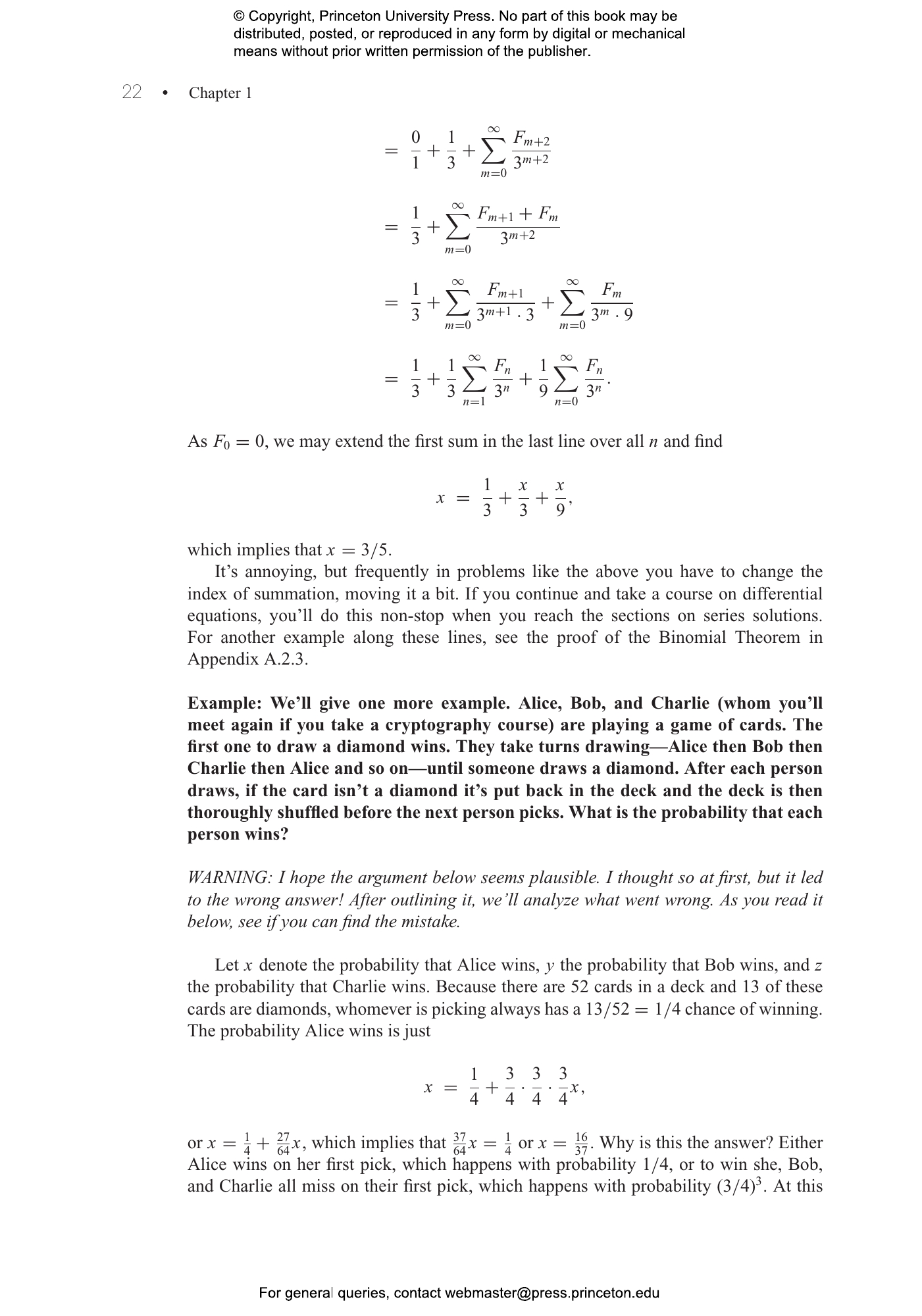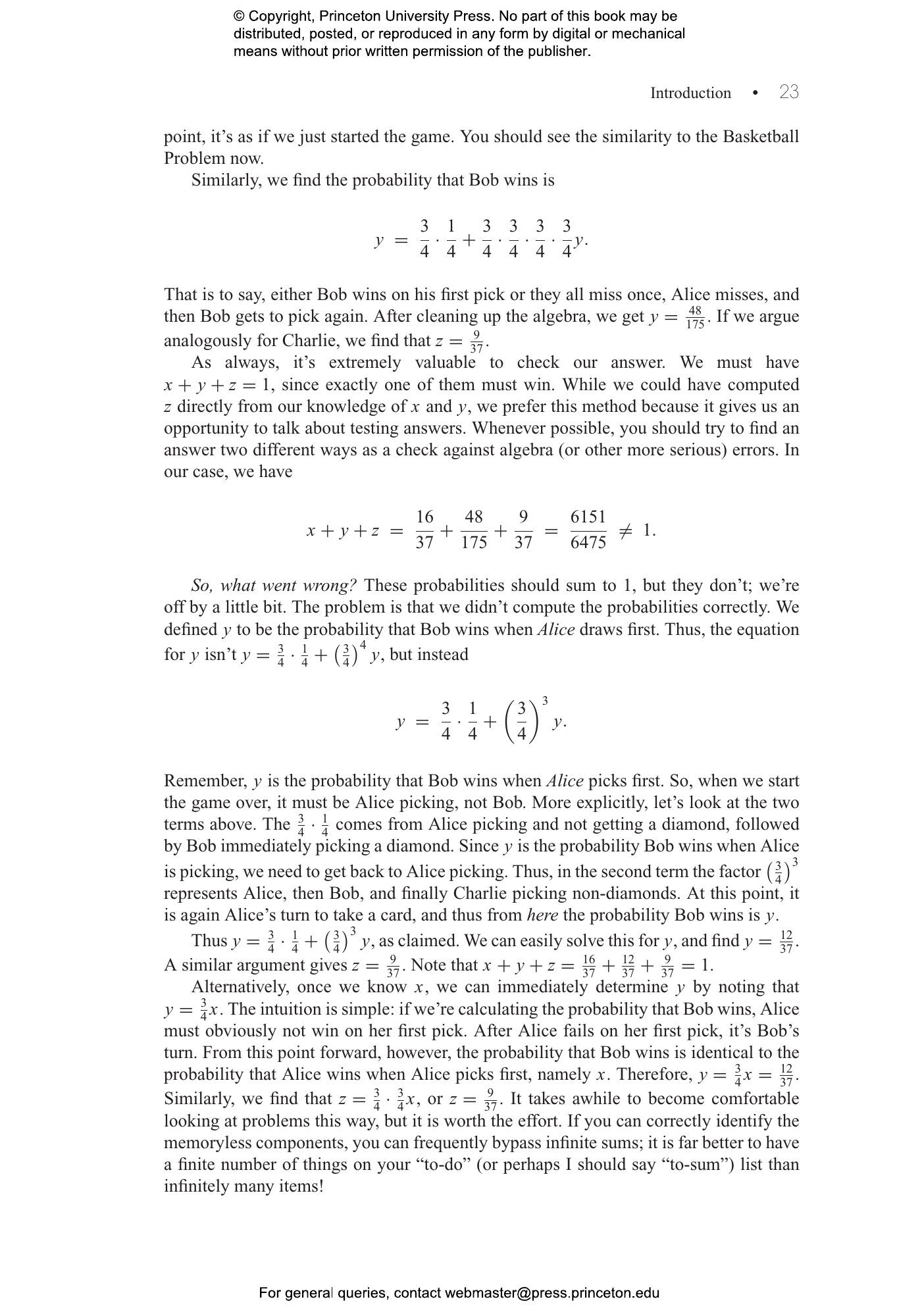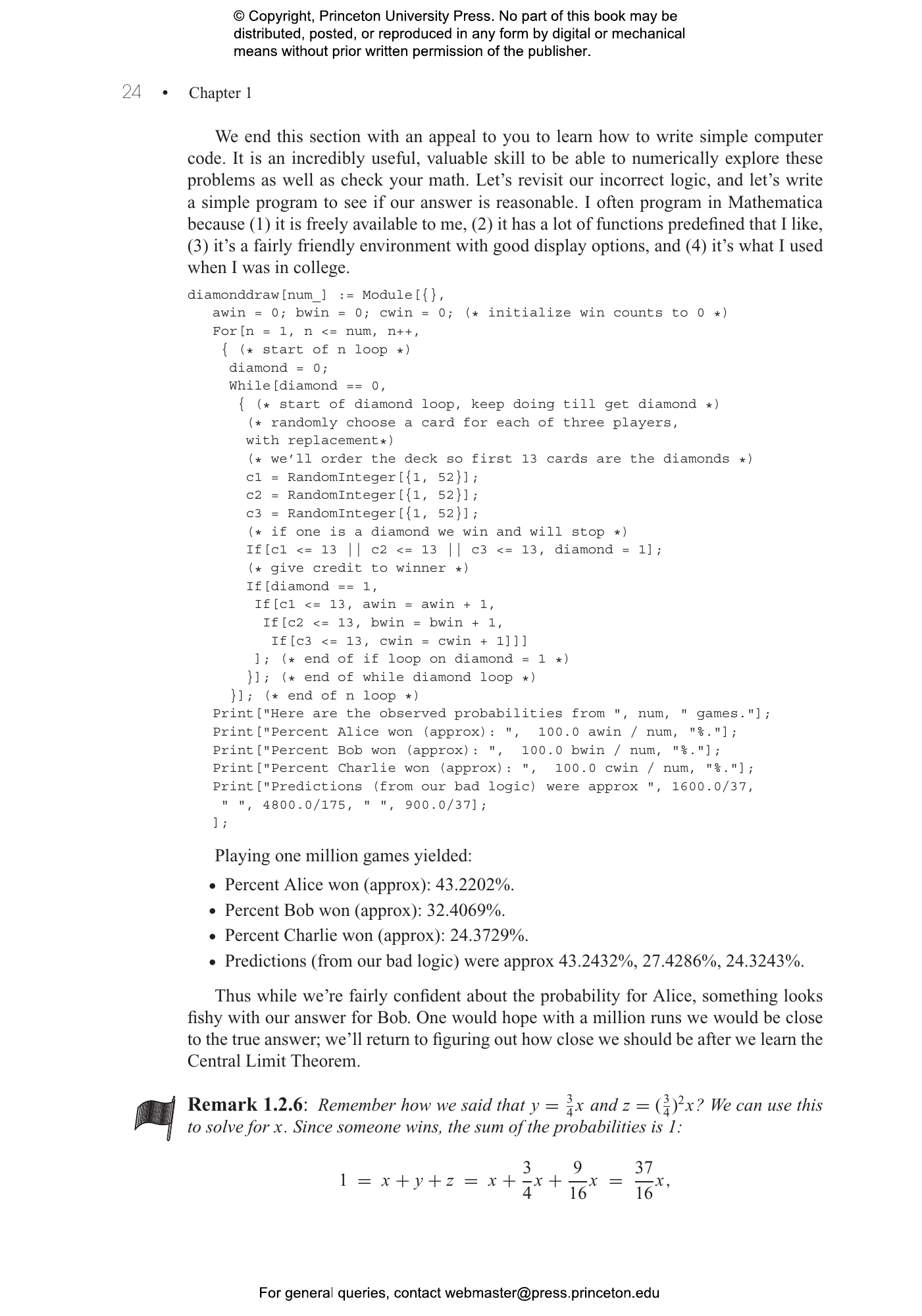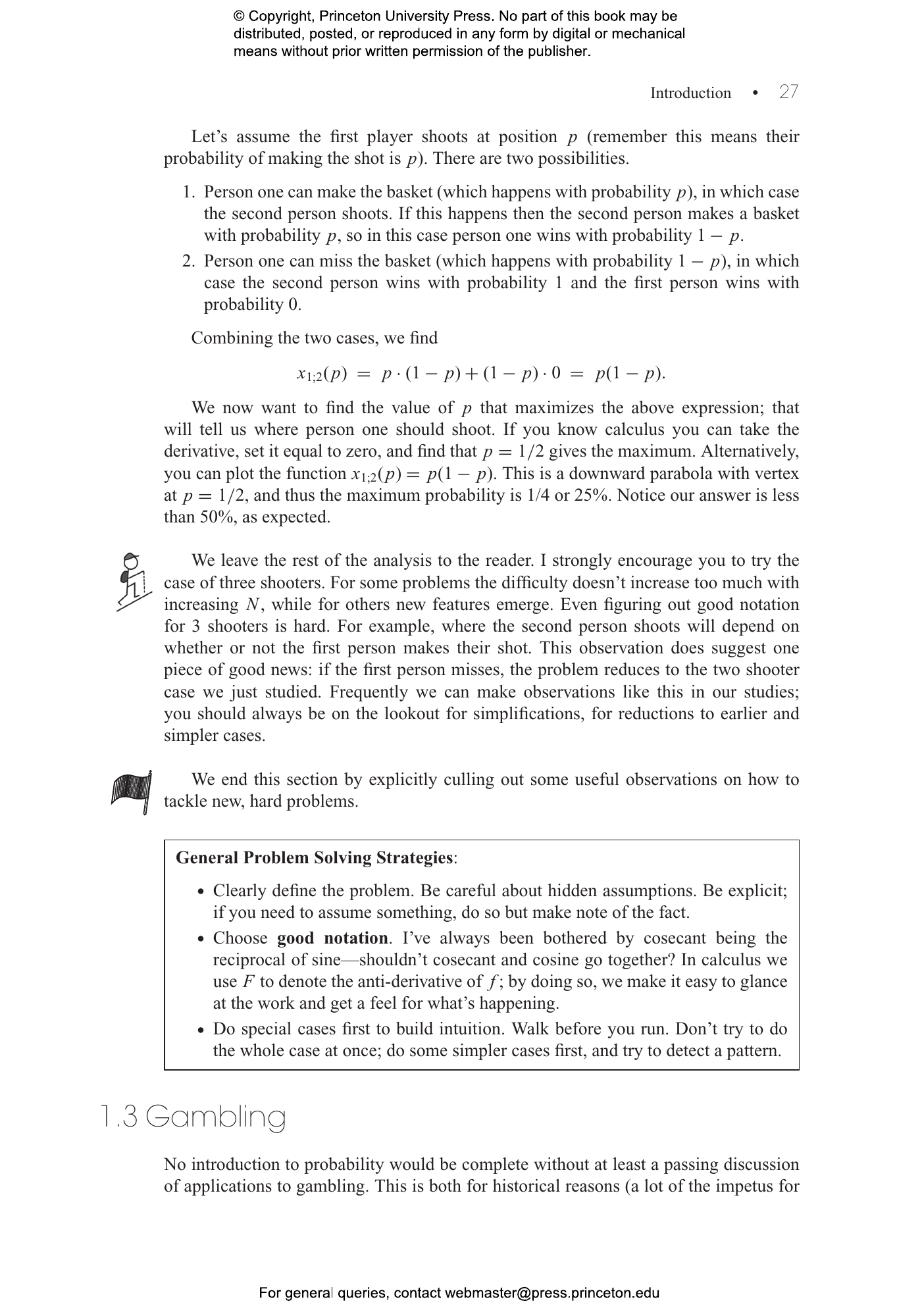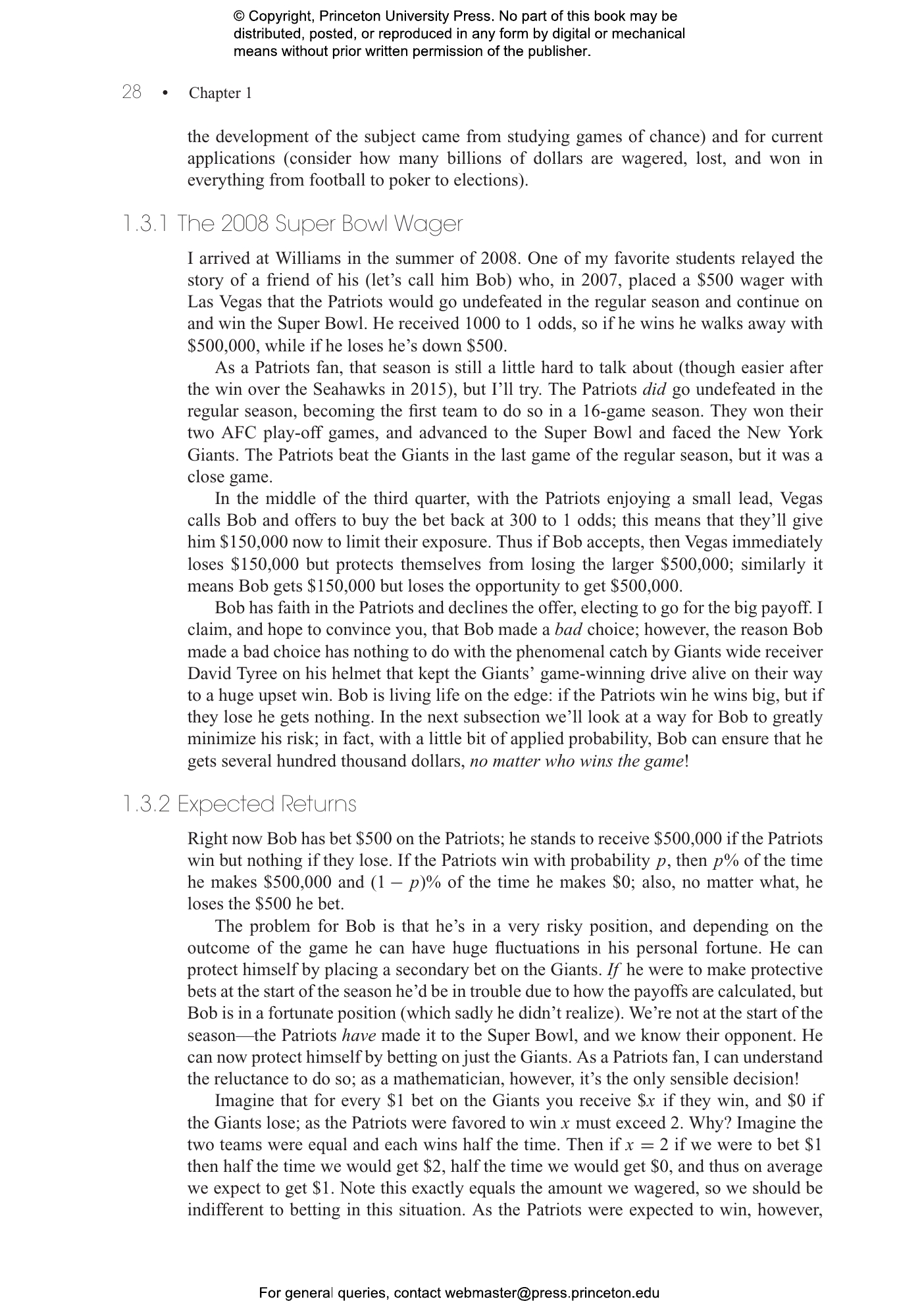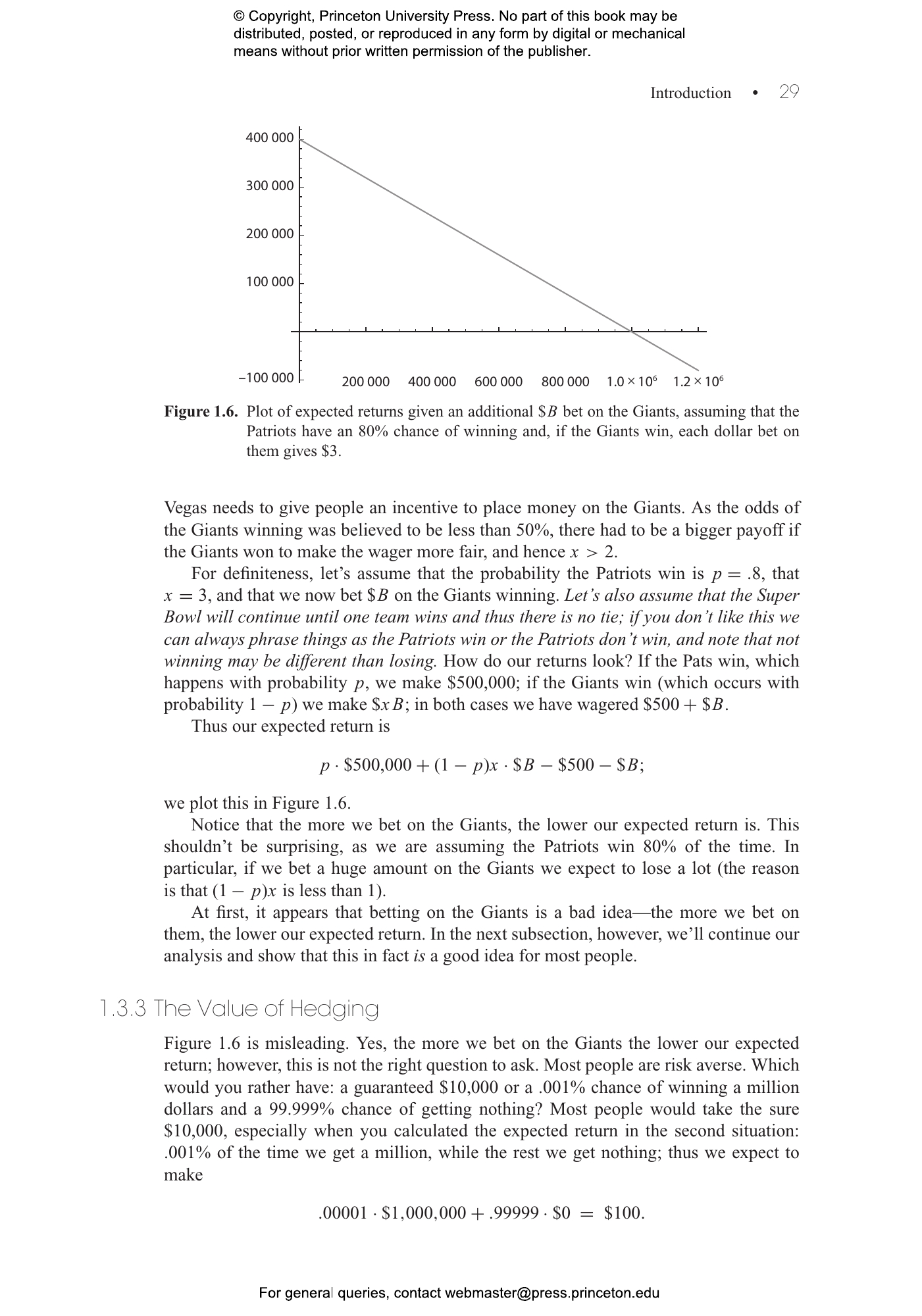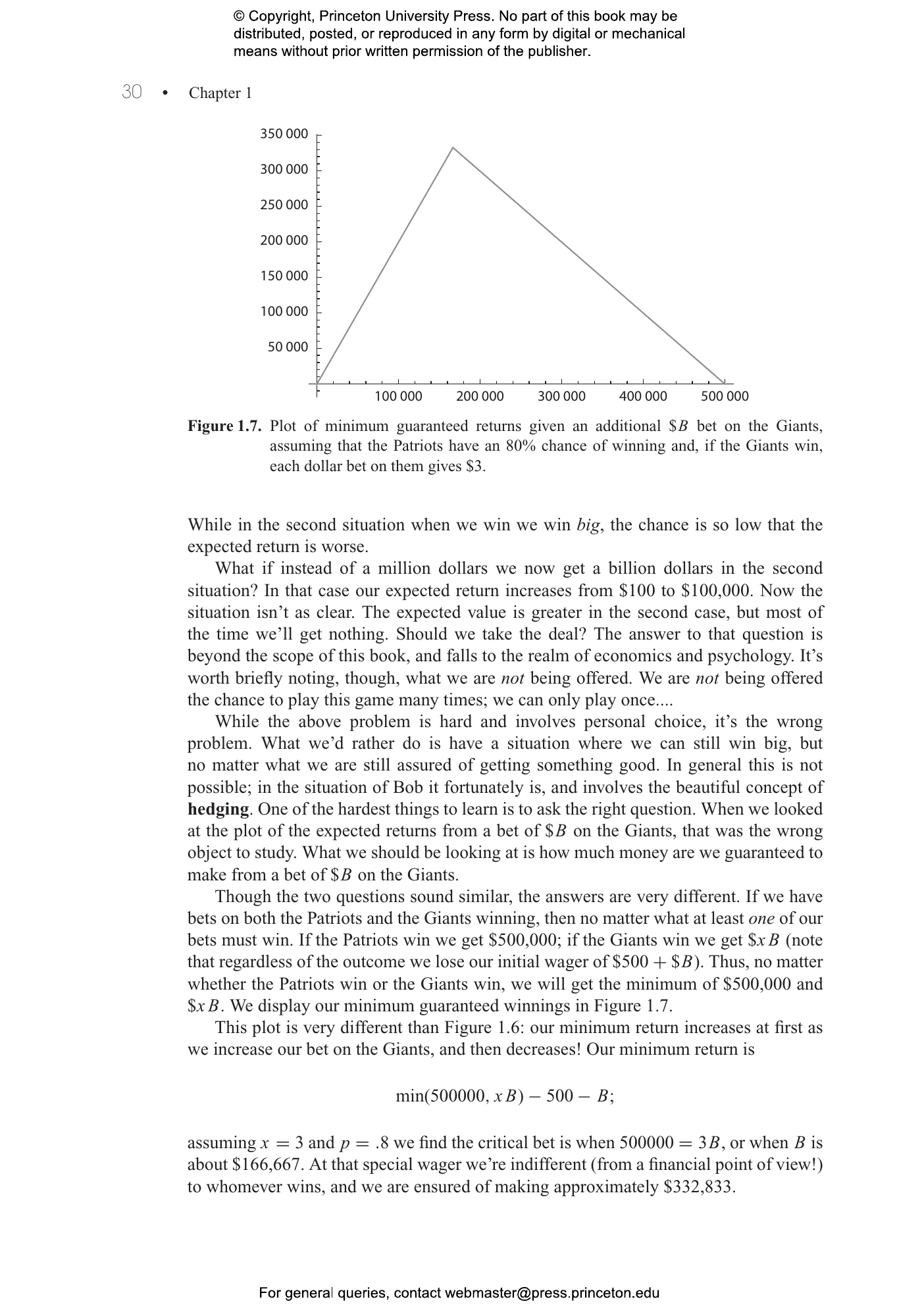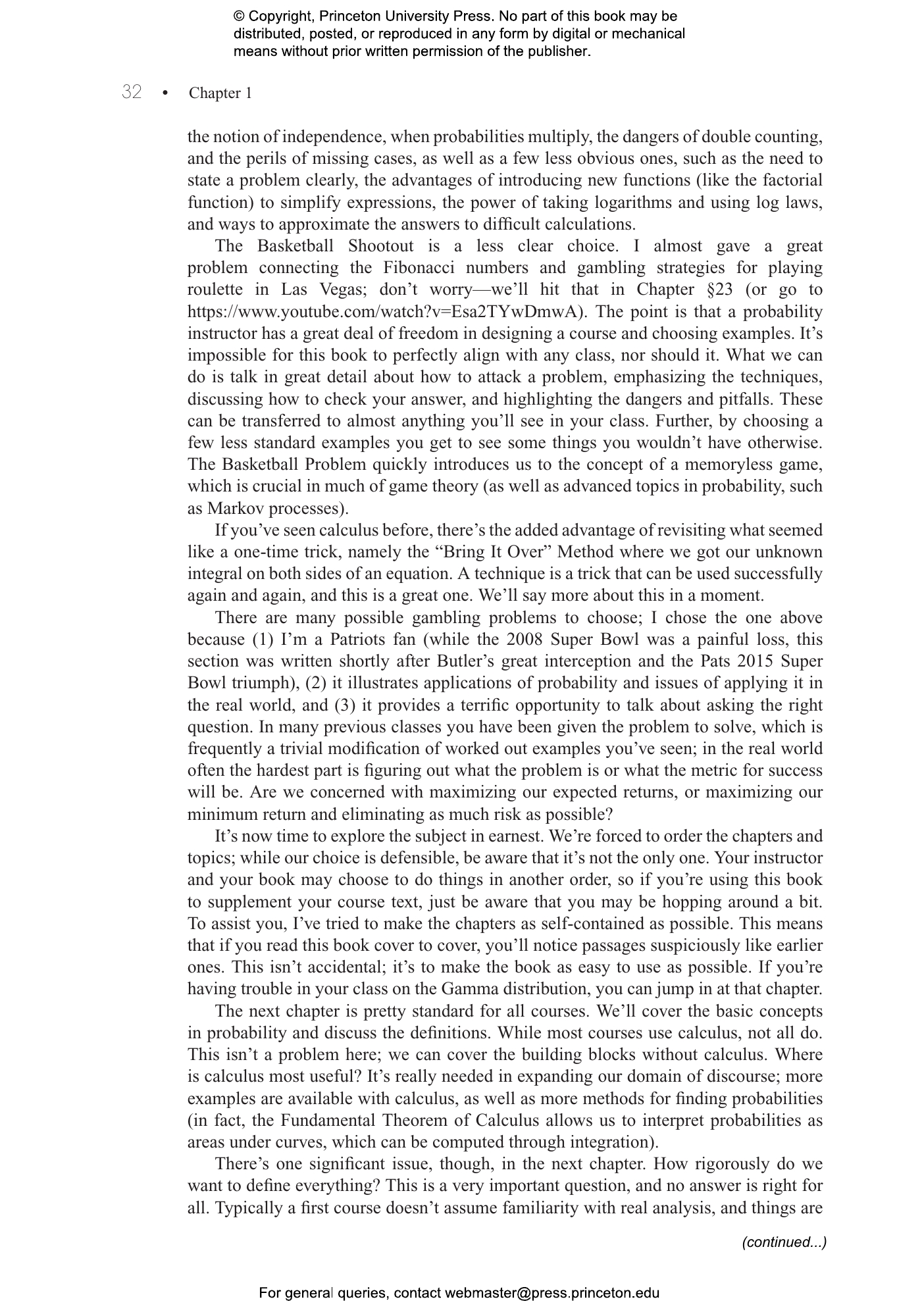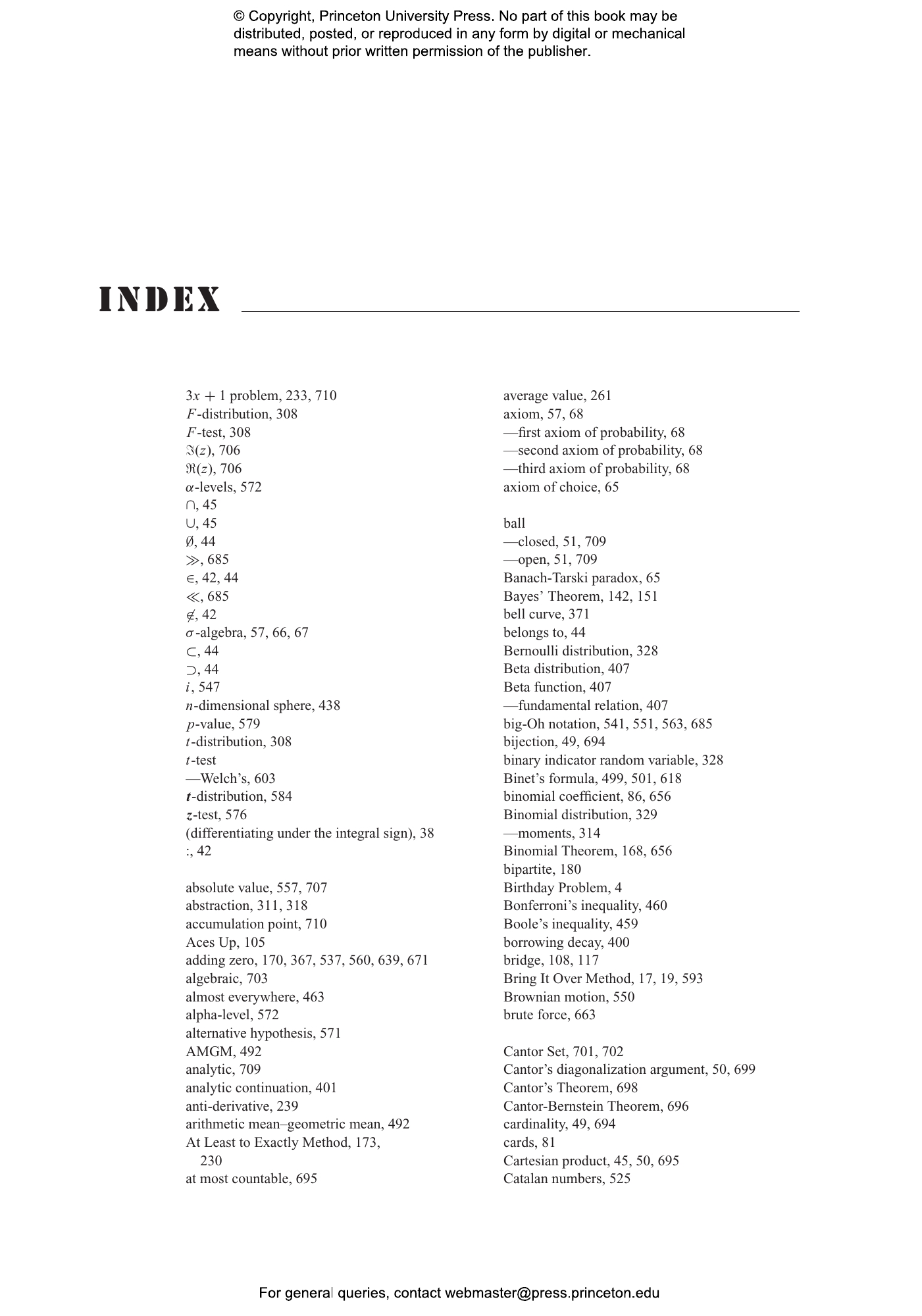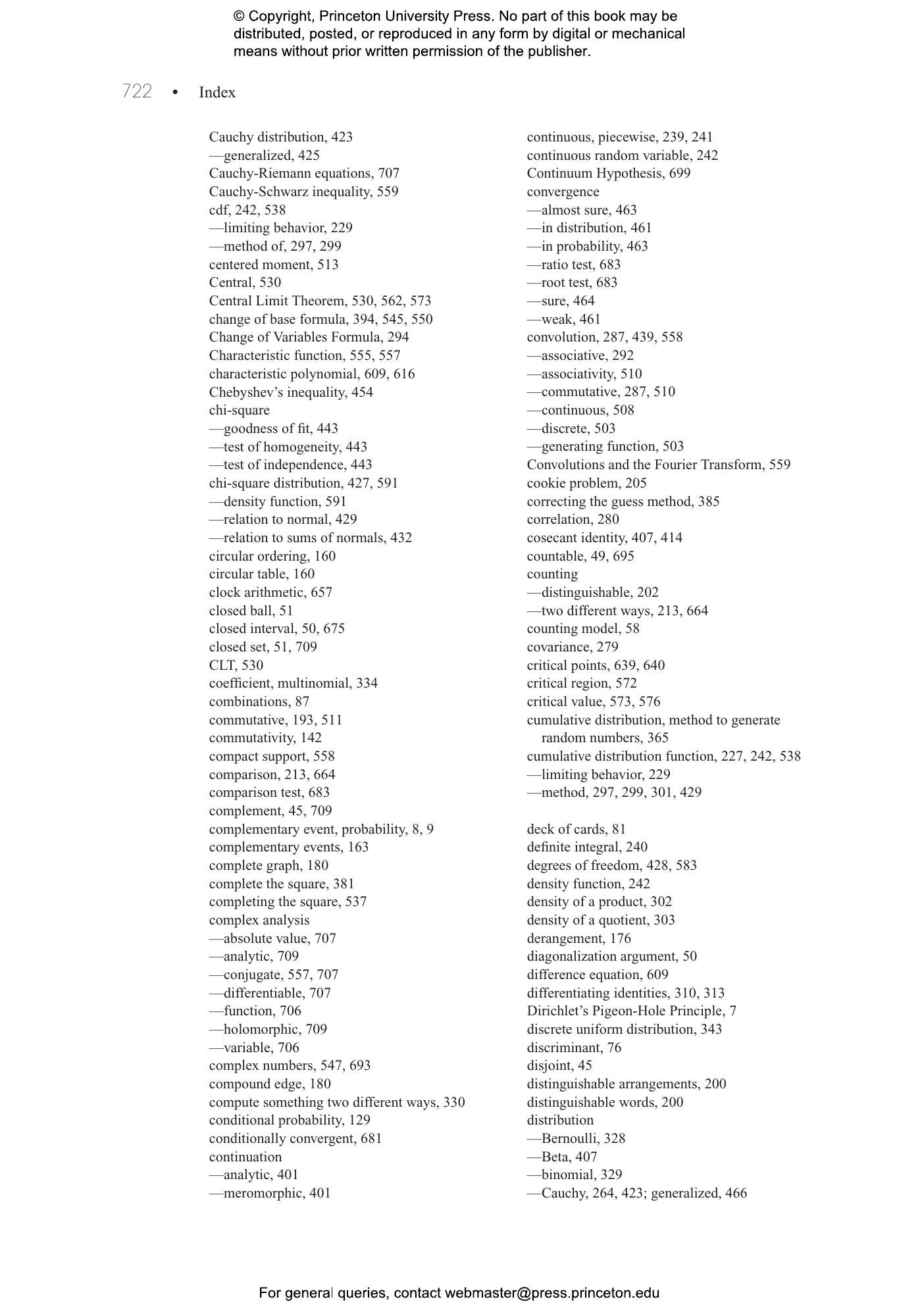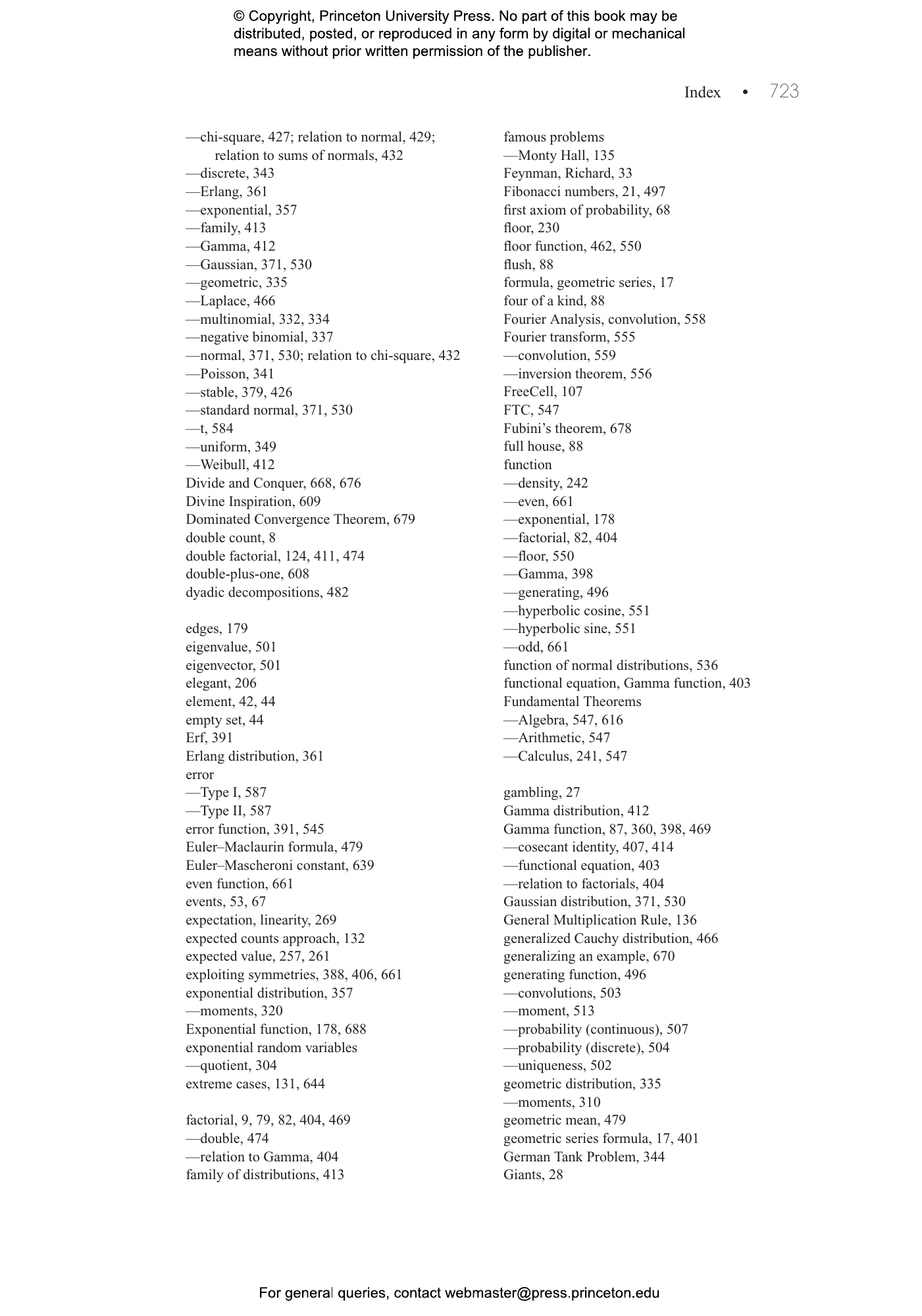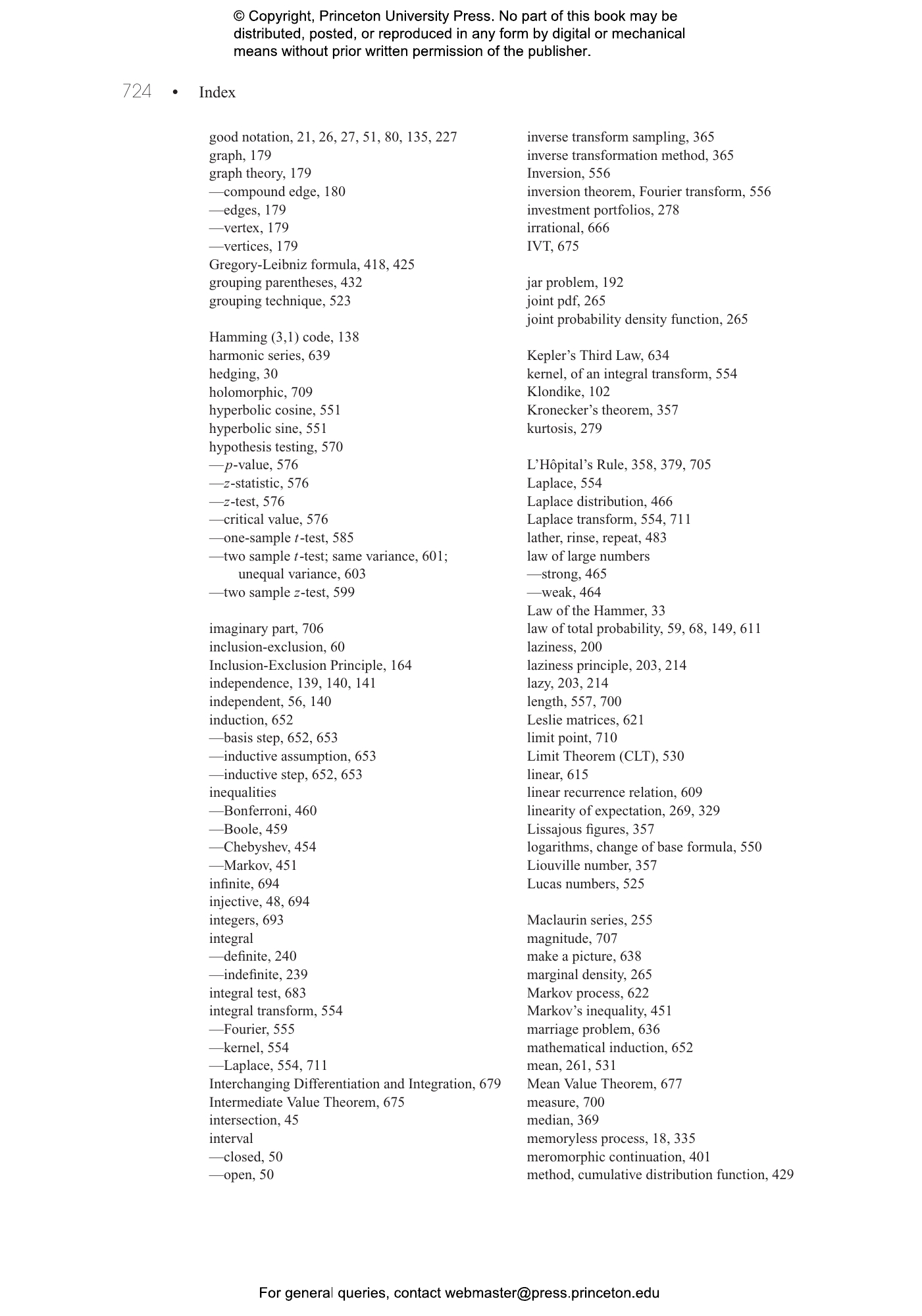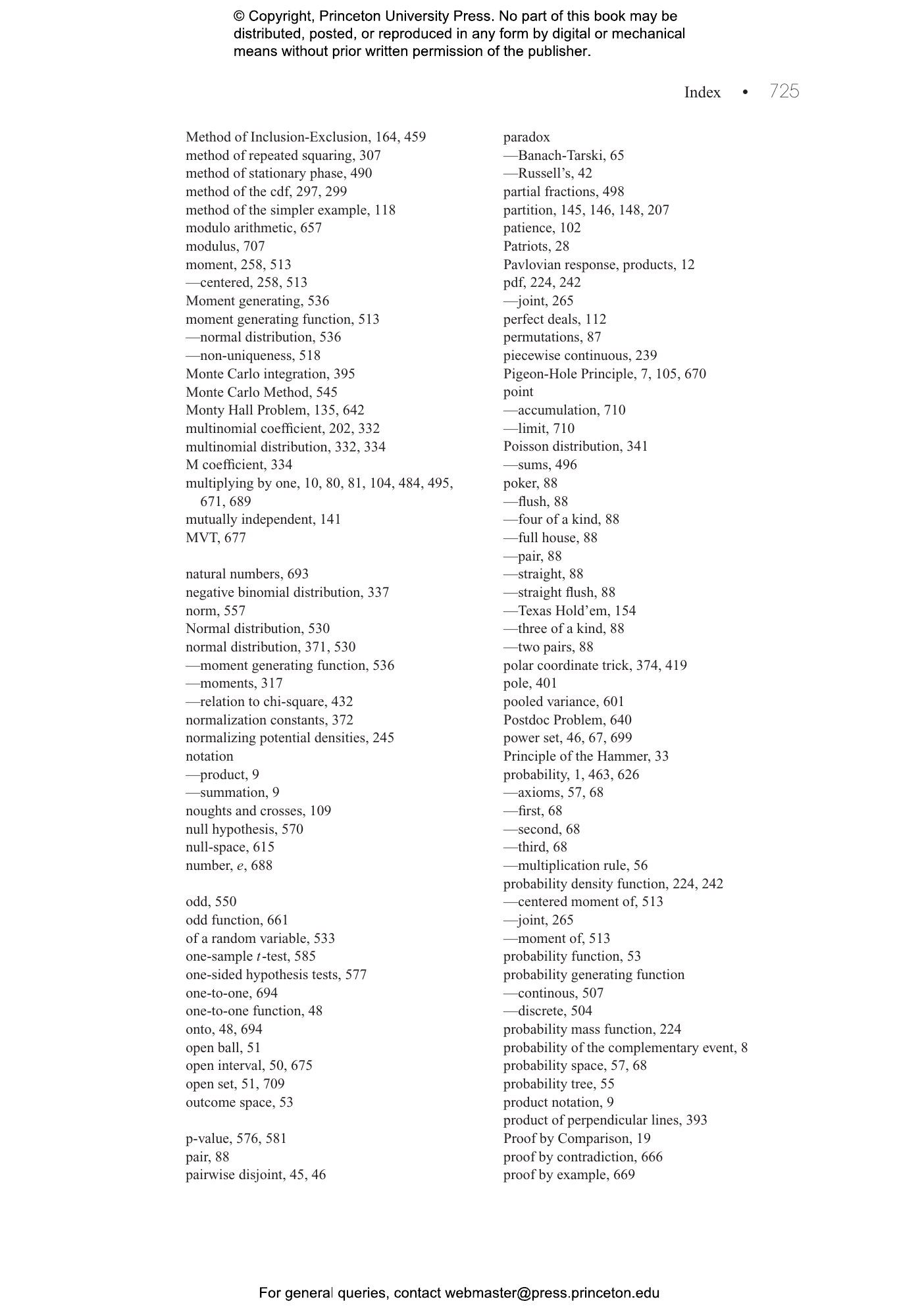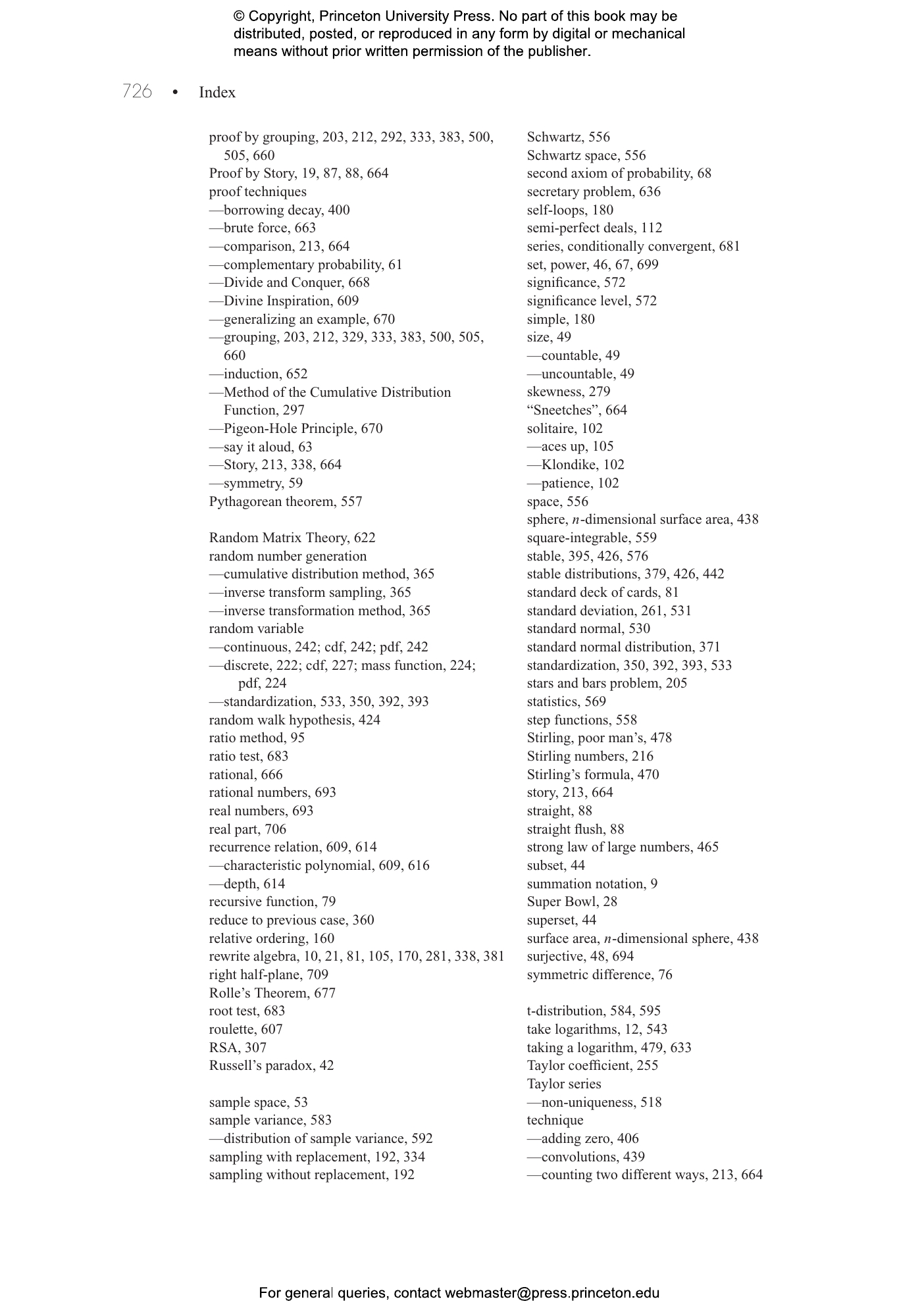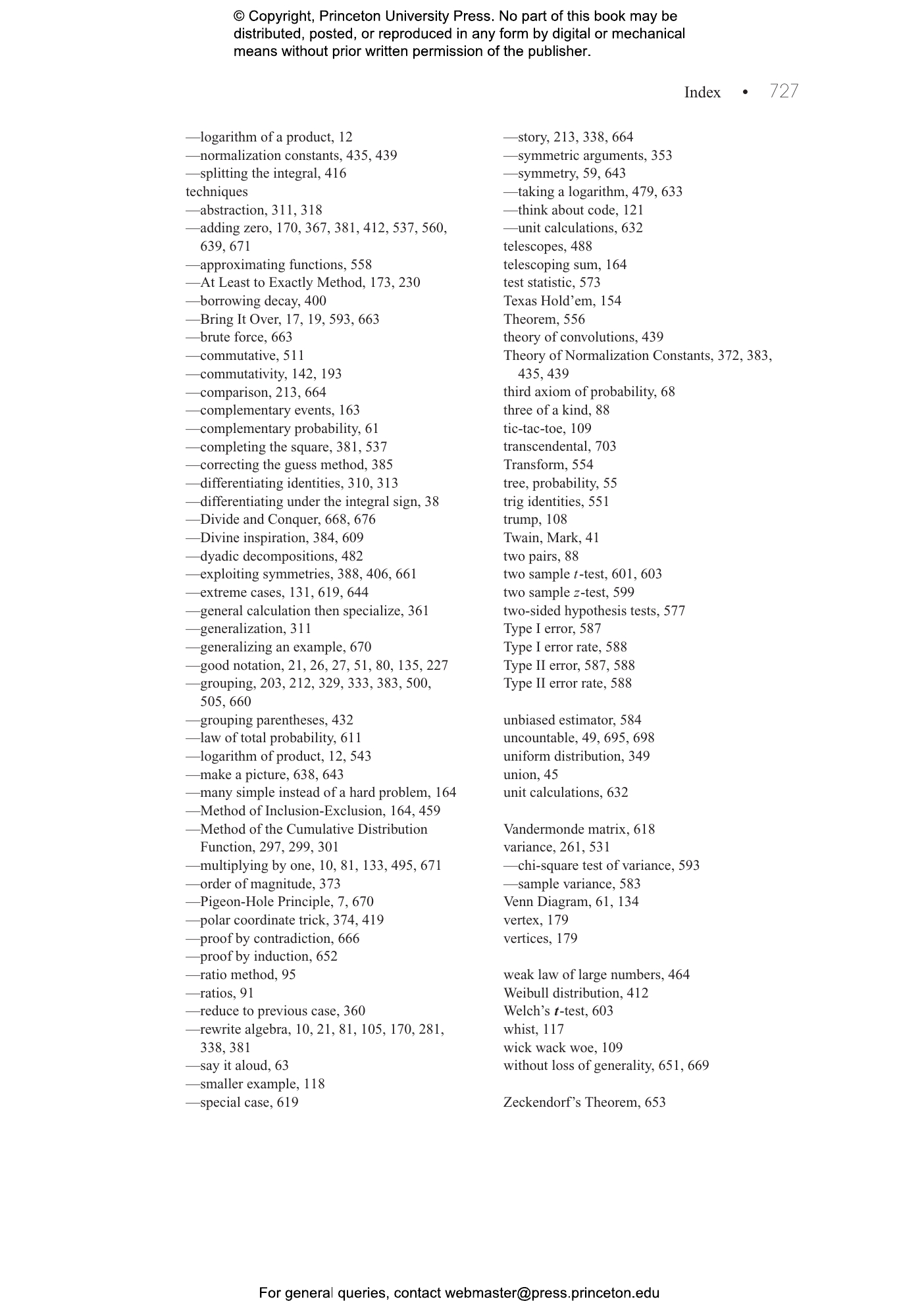For students learning probability, its numerous applications, techniques, and methods can seem intimidating and overwhelming. That’s where The Probability Lifesaver steps in. Designed to serve as a complete stand-alone introduction to the subject or as a supplement for a course, this accessible and user-friendly study guide helps students comfortably navigate probability’s terrain and achieve positive results.
The Probability Lifesaver is based on a successful course that Steven Miller has taught at Brown University, Mount Holyoke College, and Williams College. With a relaxed and informal style, Miller presents the math with thorough reviews of prerequisite materials, worked-out problems of varying difficulty, and proofs. He explores a topic first to build intuition, and only after that does he dive into technical details. Coverage of topics is comprehensive, and materials are repeated for reinforcement—both in the guide and on the book’s website. An appendix goes over proof techniques, and video lectures of the course are available online. Students using this book should have some familiarity with algebra and precalculus.
The Probability Lifesaver not only enables students to survive probability but also to achieve mastery of the subject for use in future courses.
- A helpful introduction to probability or a perfect supplement for a course
- Numerous worked-out examples
- Lectures based on the chapters are available free online
- Intuition of problems emphasized first, then technical proofs given
- Appendixes review proof techniques
- Relaxed, conversational approach
"I recommend the book to everyone who is studying and fascinated by statistics."—Singalakha Menziwa, Mathemafrica
"Steven J. Miller’s The Probability Lifesaver presents, as its subtitle claims, 'all the tools you need to understand chance' in a clear, straightforward manner. . . . For the students that have a good understanding of Calculus, the combination of the probability discussions along with the calculus behind these topics is very beneficial."—MAA Reviews
"The breadth of the book’s coverage and its clear, informal tone in addressing highly formal problems remind one of a friendly professor offering unlimited office hours, and the book will be a highly accessible supplement for students working through another, more conventional text. . . . [This is] a volume that deserves to be widely known in educational circles and will likely find its way to the shelves of practicing statisticians who wish to probe below the surface of fundamental theorems that they have learned by rote."—H. Van Dyke Parunak, Computing Reviews
"This is a superb book by a gifted writer and mathematician. Miller's amiable, intuitive writing style weaves stories about probability into the narrative in a unique fashion."—Larry Leemis, College of William & Mary
"The Probability Lifesaver creates a wonderful mathematical experience. It combines important theories with fun problems, giving a new and creative perspective on probability. This book helped me understand the big questions behind the mathematics of probability: why the complex theories I was learning are true, where they come from, and what are their applications. This approach is a welcome complement to other heavy theoretical books, and was detailed and expansive enough to serve as the main textbook for our class."—Alexandre Gueganic, Williams College ‘19
"This fun book gives readers the feeling that they are having a live conversation with the author. A wonderful resource for students and teachers alike, The Probability Lifesaver contains clear and detailed explanations, problems with solutions on every topic, and extremely helpful background material."—Iddo Ben-Ari, University of Connecticut
"In The Probability Lifesaver, Miller does more than simply present the theoretical framework of probability. He takes complex concepts and describes them in understandable language, provides realistic applications that highlight the far-extending reaches of probability, and engages the problem-solving intuitions that lie at the heart of mathematics. Lastly, and most importantly, I am reminded throughout this textbook of why I chose to study mathematics: because it's fun!"—Michael Stone, Williams College ‘16
"The Probability Lifesaver motivates introductory probability theory with concrete applications in an approachable and engaging manner. From computing the probability of various poker hands to defining sigma-algebras, it strikes a balance between applied computation and mathematical theory that makes it easy to follow while still being mathematically satisfying."—David Burt, Williams College ‘17
"A balanced mix of theoretical and practical problem-solving approaches in probability—suited for personal study as well as textbook reading in and out of the classroom. After college, while working, I took a probability class remotely and with this book, I was able to follow easily despite being without a TA or easy access to the professor. From research examples to interview questions, it has saved my life more than once."—Dan Zhao, Williams College ‘ 14
"The Probability Lifesaver helped me build a foundation of probability theory and an appreciation for its nuances through engaging examples and easy-to-follow explanations. This well-written and extensive book will serve as your guide to probability and reward you for the time you give it."—Jaclyn Porfilio, Williams '15
"I see a tremendous value in this fun, engaging, and informal book. It has a conversational tone, which invites students to engage the material and concepts. It is as if Miller is there, lecturing on the topics, helping students to think things through for themselves."—John Imbrie, University of Virginia
"The Probability Lifesaver contains a lot of explanations and examples and provides step-by-step instructions to how definitions and ideas are formulated. I appreciated that it tries to provide multiple solutions to each problem. Interesting, informative, approachable, and comprehensive, this book was easy to read and would make a good supplement for a first probability course at the undergraduate level."—Jingchen Hu, Vassar College
"Filled with many interesting and contemporary examples, The Probability Lifesaver would have undoubtedly helped me while I was taking statistics. Miller offers careful, detailed explanations in simple terms that are easy to understand."—James Coyle, former student at Rutgers University
